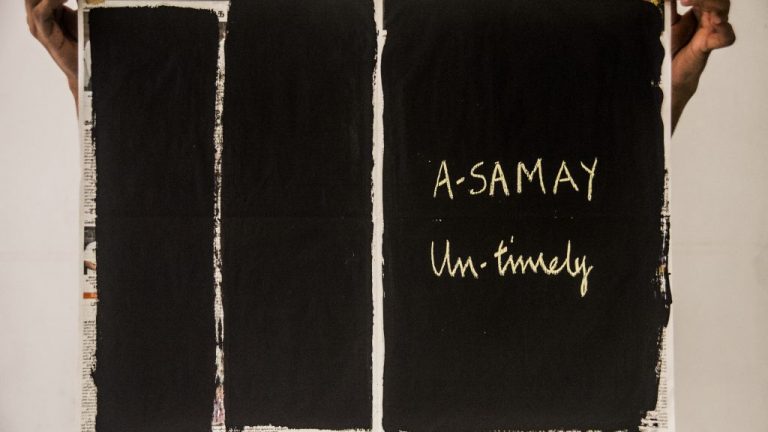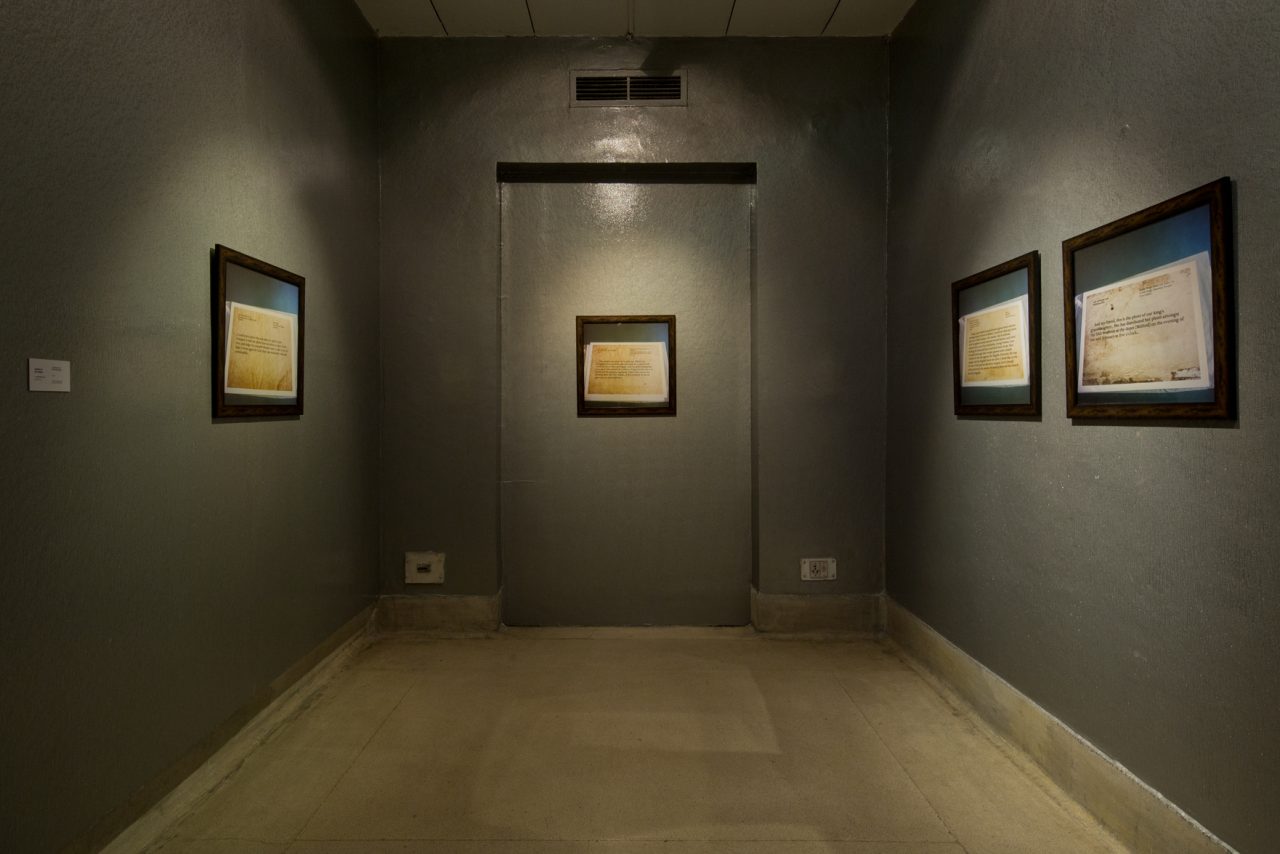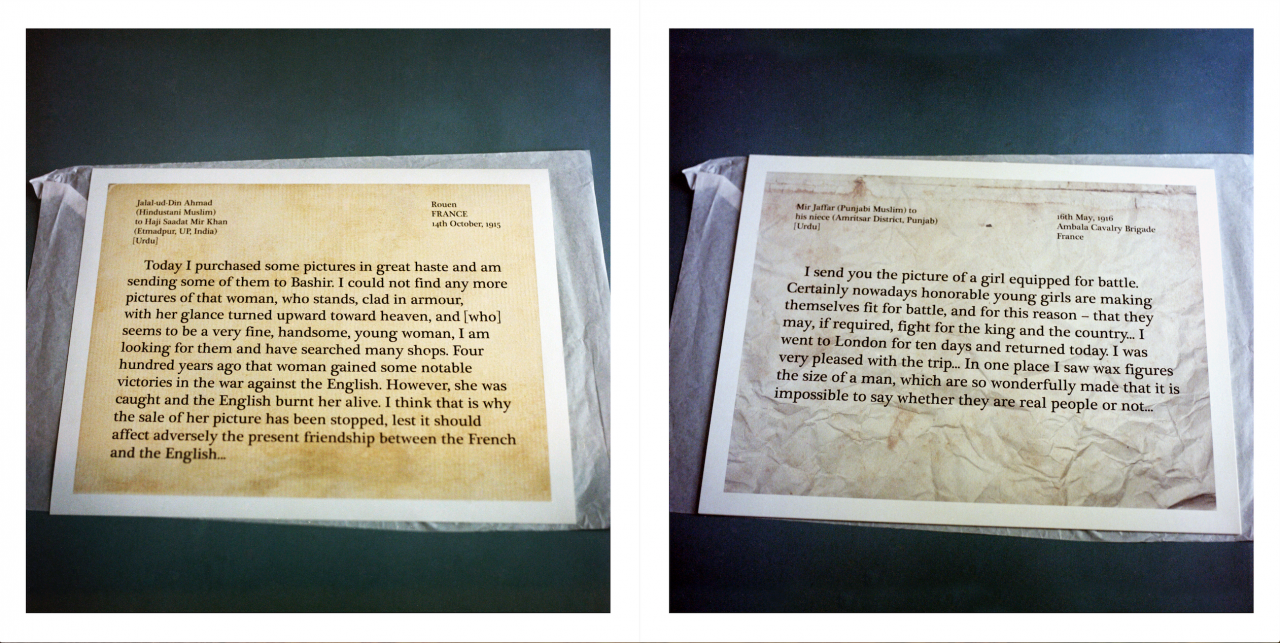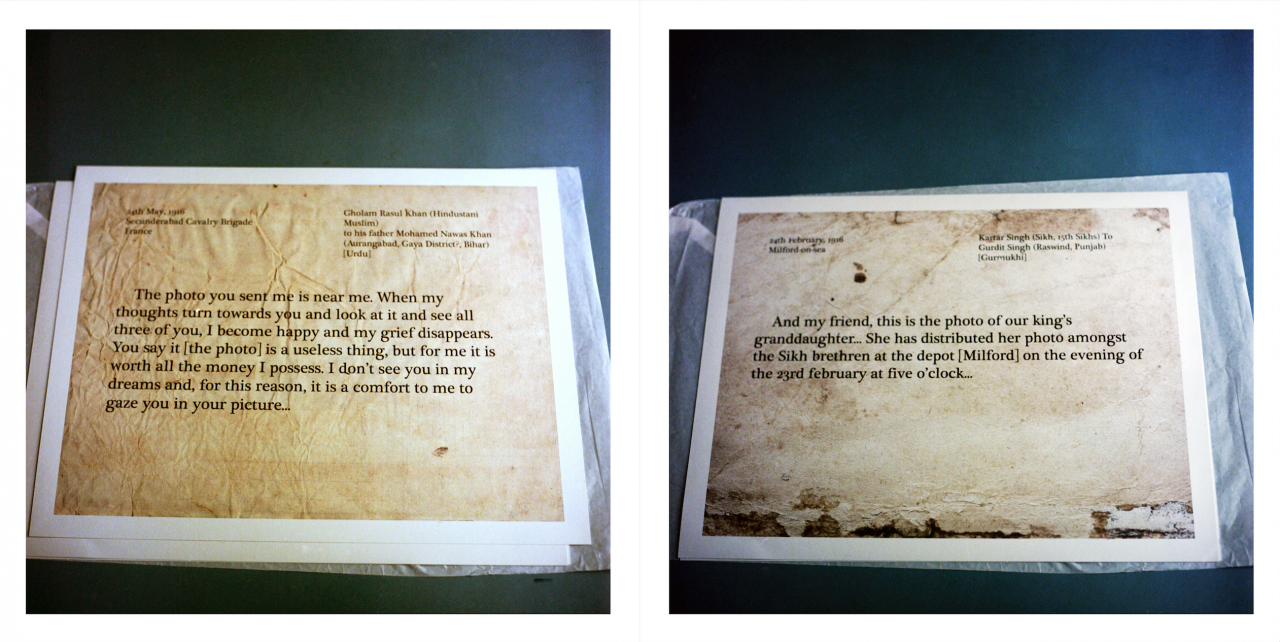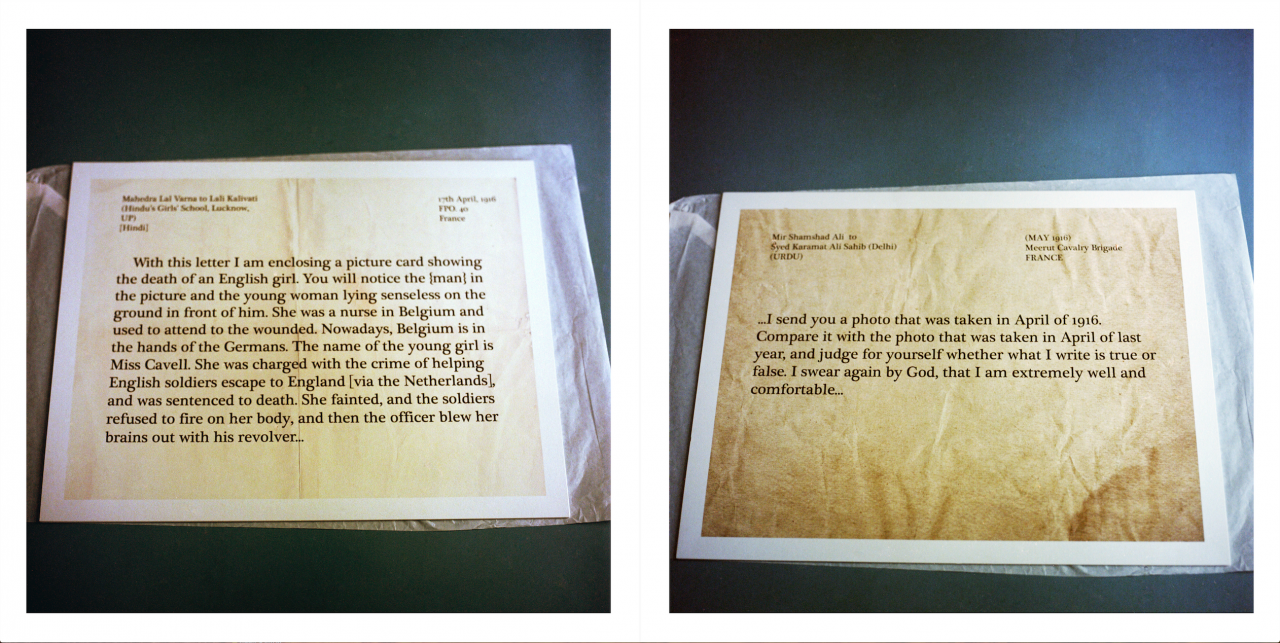Asamayavali/Untimely Calendar
National Gallery of Modern Art (NGMA), New Delhi (2014)
Media rich, concept driven, formally multi-faceted, playful, urgent, replete with philosophical density – this is the kind of art that addresses all our faculties – intellectual, emotional and sensory. A visitor to this exhibition is invited to be a witness, to see himself and herself become a protagonist in a rich field of ideas, dream-like images, of ‘luminous wills’.
Time – how to survive it, and how to embrace what Raqs call the ‘untimely’- is central to this show. Walking through ‘Asmayavali/Untimely Calendar’, and browsing through this publication that accompanies it, will feel like a journey through stories, dreams, puzzles and enigmas. The viewer/reader/listener encounters animals, machines, time-pieces, spectres, and things that unmake and reassemble all that we take for granted.
Billboard, digital printing on steel, 5’ x 3’6”
Albrecht Dürer came across rumors of the Indian rhinoceros named Gainda sometime in 1515 that he would immortalize in his woodcut, Rhinoceros. Gainda the rhinoceros, far from his native habitat in the grasslands of Gujarat (where no rhinoceroses remains today), was sadly lost at sea while being transported, in time, from Lisbon to the Vatican.
In the 16th century, the king of Malabar gifted a rhinoceros to the king of Portugal. This rhinoceros travelled all the way to Portugal and, upon arrival, the Portuguese king decided to gift the rhinoceros to his cousin, the Pope. The rhinoceros was shipped out from Lisbon to Rome, but was shipwrecked and lost at sea. Years later, and with no rhinoceros in Europe, Albrecht Dürer – Northern Renaissance painter, engraver, printmaker, mathematician, and theorist from Nuremberg – was commissioned to make a piece about this story. Dürer, who had never seen a rhinoceros, immortalised the rhinoceros in his woodcut titled ‘Rhinoceros’. A ghost of our time in the future and the echo of times past in today, Gainda the rhinoceros appears often in Raqs’ works.


Corrections to the First Draft of History
Newsprint, chalkboard paint and chalk, Dimensions variable
In 1850, a man called Peary Churn Sarkar wrote up a primer for Bengalis to learn English with. He called it, ‘The First Book of Reading’. It was a textbook, a lexicon, an almanac, an enchiridion. With it, pupils learnt to read English, word by word, aloud at first, and then silently. With a new primer comes a new world, and a new time. Being a witness to history is to consider the transformation of what is happening into what is no longer happening. It is to see the world turn spectral before our eyes. Corrections to the First Draft of History ‘rewrites’ on newsprint of the world so as to speak of making new sets of meanings for what is considered history in our present times.









Three Meetings That May Have Happened, Underwater or Mid-Air
Wallpaper, cutouts of brushed steel, glass, photographs, documents. Dimensions variable
A robot tumbles forth from the future, a deep sea diver dives into the abyss of doubt, a bicycle wheel turns the inevitable away, cacti count to infinity, a rhinoceros transgresses histories while a fabled swan discriminates (as they are supposed to) between the ocean of history and the nectar ofpossibilities, and the Yaksha and the Yakshi look on, caught mid-sentence, in the loop of anotherriddle. A telegram is on its way. This is how the first gatherings of the Last International make their presence felt.


The Kd Vyas Correspondence, Vol.1
18 videos, 9 soundscapes, structure, text
The KD Vyas Correspondence Vol. 1 is an installation embodying an epistolary enigma. The basis of this work are a set of eighteen ‘letters’ between Raqs and a person or entity who is identified as KD Vyas, sometime redactor of the Mahabharata.
The installation manifesting the ‘Correspondence’ brings together eighteen video enigmas that could be an abbreviated contemporary concordance to the eighteen cantos of the Mahabharata, densely encrypted messages, annotations to the letters themselves, or memories of places and times where they may have been read – once, twice or an infinite number of times.
The work involves video, sound, a dossier and a dialogue with the architects Nikolaus Hirsch and Michel Muller that results in a structure ‘The Node House’ that holds the images and sounds, hovering like the disembodied memory of an instance of the epic’s hyperlinked incantation.



Steel table with wooden top, printed canvas (58”x 58”, 1m steel measure)
During a rehearsal process for a work being made with theatre artists, Raqs began to seek a language for states of feeling, and the body, that were at a tangent to the way in which a standard repertoire of emotions are described. They were drawn to a 10th century manual for poets and performers by Abhinavagupta, philosopher and aesthetician from early medieval Kashmir. Abhinavagupta proposes a scheme for combining emotional and bodily states to produce a cascading series of affective registers that the actor can play with. Through this work, Raqs enters into the territory of things that we know, but defy classification as new sensations are created by bringing unexpected things together. This work can be seen as an annotation that lists one of those sets of un-recognised possibilities: states of being and feeling so fleeting, so real and so enigmatic, that a whole new vocabulary has to be invented even to begin talking about it.
One meter of truth seeks to challenge this new classification itself: can even these suffice?



The Museum of Lost Constellations
Objects, photographs, printed text. Dimensions variable.
Constellations are a way in which we make sense of the sky. Perhaps they are the first images made by human beings. Not necessarily by hand, but with the mind; while looking up at the sky. Translated into patterns and pictures found in the primitive night that are with us till today. The map of the sky is a palimpsest. Some patterns fade, others lurk and hide within and beneath other patterns. It is this process of fading, hiding and lurking that gives rise to the phenomenon of ‘Lost Constellations’. These are constellations fallen into disuse or gone into the exile of astronomical amnesia.
The Museum of Lost Constellations is an attempt to recover thirteen of them into memory through a set of objects that recall the names and lore connected to each lost constellation. It is sited by Raqs Media Collective within the historical observatory of the Stockholm Observatory Museum. The objects themselves are neither tagged, nor named. Matching their presence to the descriptions of the lost constellations in this text is the only way a visitor can construct for themselves a map of a fragment of forgotten sky.


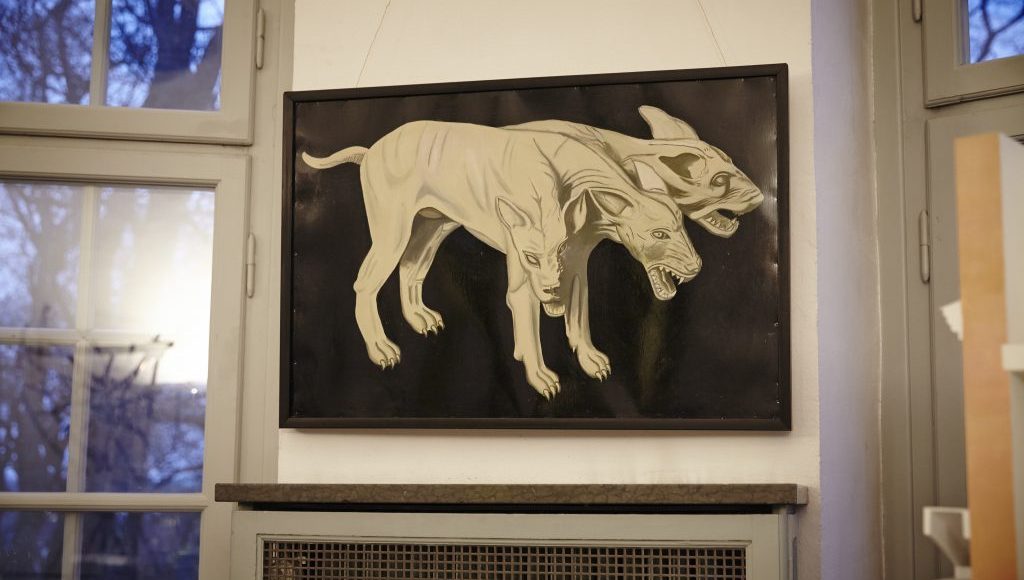



Digital Print on ACP, acrylic (6 x 4 ft.)
The material infinitude that makes up the real world, Raqs argues, is a swirling, entangled mass of vital, corporeal wills to live and exist actualized as forms of matter and sentience. Infinity has room for everyone. It contains the uncountable. With this claim on abundance, ideas of countable limitations are challenged. Instead, Raqs gesture towards a joyous, radical countless-ness. What is, multiplies.



Video diptych, 50″
The Capital of Accumulation is a video installation that writes an oblique narrative of the relationship between metropolises and the world in counterpoint to Rosa Luxemburg’s exceptional critique of global political economy, ‘The Accumulation of Capital’. The work, a 50 minute long video diptych, trawls through a haunting, dream like landscape straddling Warsaw, Berlin and Bombay/Mumbai to produce a riff on cities, capitalism and the twentieth century’s turbulent history. Part natural history, part detective journal… part forensic analysis, part cosmopolitan urban investigation…and part philosophical dialogue……”The Capital of Accumulation” offers a considered and personal reflection on the remaining possibilities for radical renewal in our times.






Whenever the Heart Skips a Beat
Billboards, (8 x 8 ft.)
Each billboard shows a clock-face that features a pair of words instead of numbers. The words relate to each other in counter-point, producing a set of permutations and combinations of states of mind, and being, through an invocation of the actions of the hour and minute hands in a clock. Eccentric clocks announce the hours of chrysanthemum and co-incidences.






It’s About Being Here Here and There at the Same Time
Wall, three metals
Three metallic strips – brass, copper and steel– make a possible ‘doorway’ to another place, another time, and configure a possibility of being simultaneously inside and outside. Edges converse, lines travel across dimensions, definitions outdo each other.

Video Wallpaper
The ghost is here again.
To be neither witness, nor agent, not even provocateur, to be perhaps just a haunting laugh through time. To bundle sentience and turn on the electric wavelengths of interconnected metabolic surges coursing through the shared inhabitation of a wet planet wandering through a big, crowded sky: That is what the surge is.

Animation, archival trace, video loop (0:47 min)
In every sum figured by power, a remainder haunts the calculation. Not everything adds up. A people are never equal to a listing of their bodies. They are something more and something less than a population. Counting counter to the reasons of state, Raj Konai, a peasant from nineteenth century Bengal, the owner of the floating trace of a disembodied hand indexed in a distant archive, persists in his arithmetic. The handprint of Raj Konai was taken in 1858 under the orders of William Herschel – scientist, statistician, and at the time, a revenue official with the Bengal government. It was sent by Herschel to Francis Galton, a London eugenicist and pioneer of identification technologies. It is currently in the custody of the Francis Galton Collection of the University College of London. This is where the Raqs collective first encountered the image of Raj Konai’s hand. Fingerprinting experiments, and later technologies, all began with this handprint. India has now embarked on a nationwide Unique Identification Database (UID) and plans to have its billion soon counted and indexed.


The Imposter in the Waiting Room
Video, performance (19 ft x 32 in)
The Impostor in the Waiting Room is a consideration on what happens when modernity encounters its shadow. As a group of practitioners who navigate routes in and out of modernity, its past, present and future, on a daily basis in Delhi – the city where we live, and in the course of our travels elsewhere, we have come to realize that the world is densely encrusted with ‘waiting rooms’ – spaces for transients to catch their breath as they prepare for the arduous ascent to the high promontory of modernity.
The image of the “waiting room” gestures towards the sense of incompleteness and elsewhereness that fills those spaces of the world about which the overriding judgment is that they are insufficiently modern – that they are merely patchy, inadequate copies of ‘somewhere else’. Such waiting rooms exist in the very heart of that ‘somewhere else’ – in New York and Los Angeles, in London and Singapore – but it is outside these islands that they have their truest extent. Most of the world, in fact, inhabits such antechambers of modernity. We know such antechambers well; we are at home in them, everywhere.
Waiting Rooms everywhere are full of Impostors waiting to be auditioned, waiting to be verified, waiting to know and to see whether or not their ‘act’ passes muster, and whether they can cross the threshold and arrive on to the plane where ‘history is truly made’.
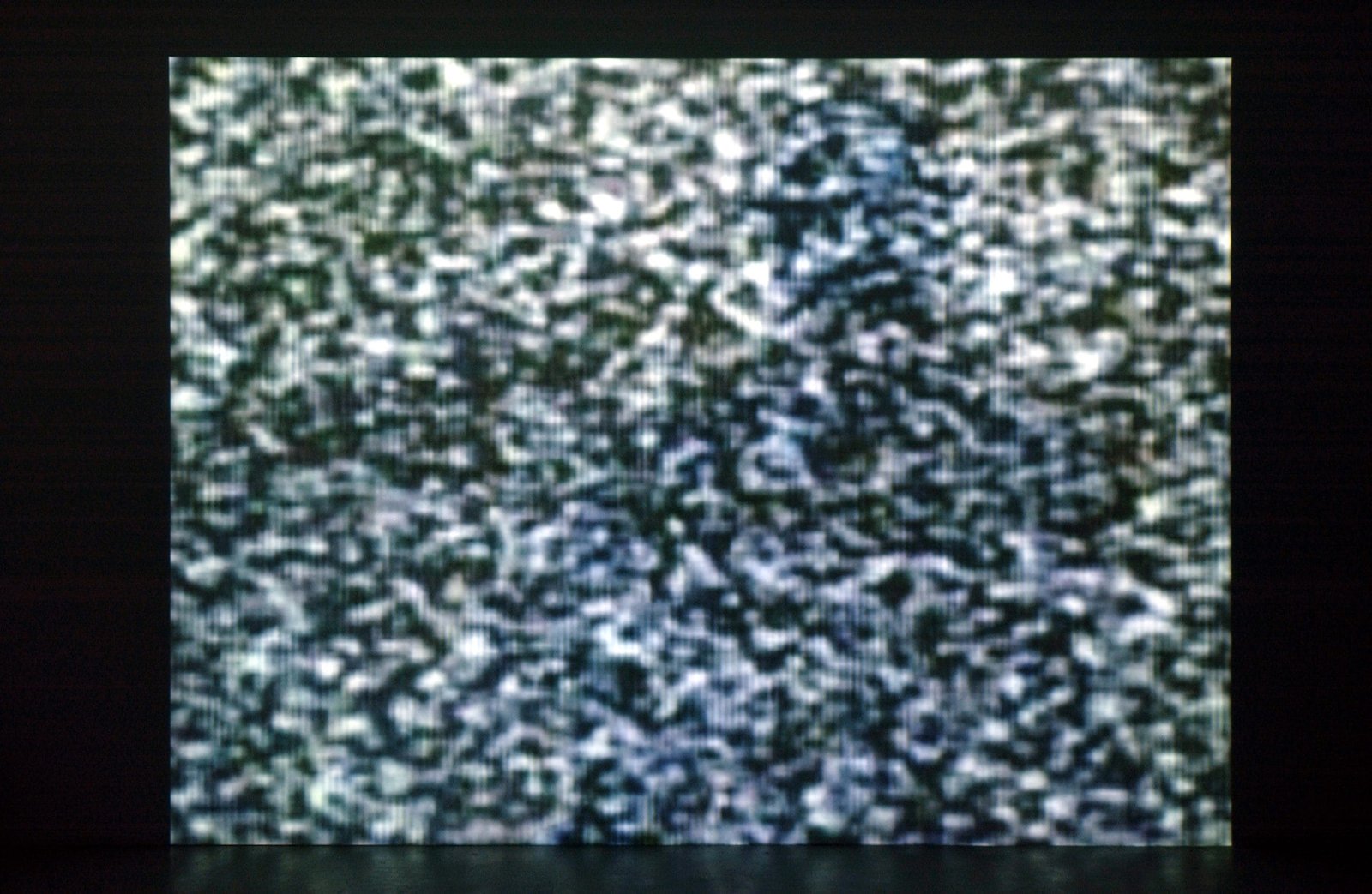
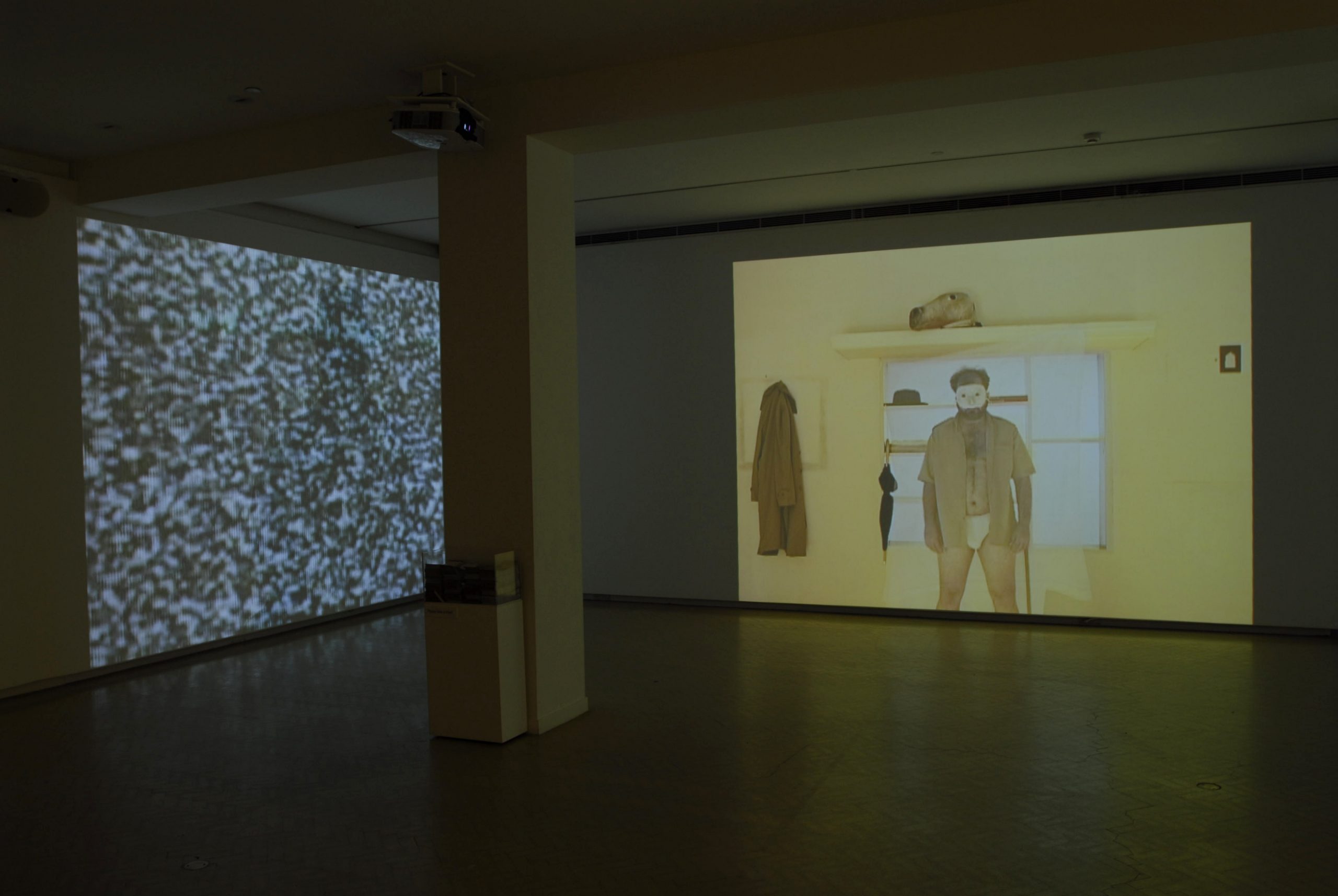
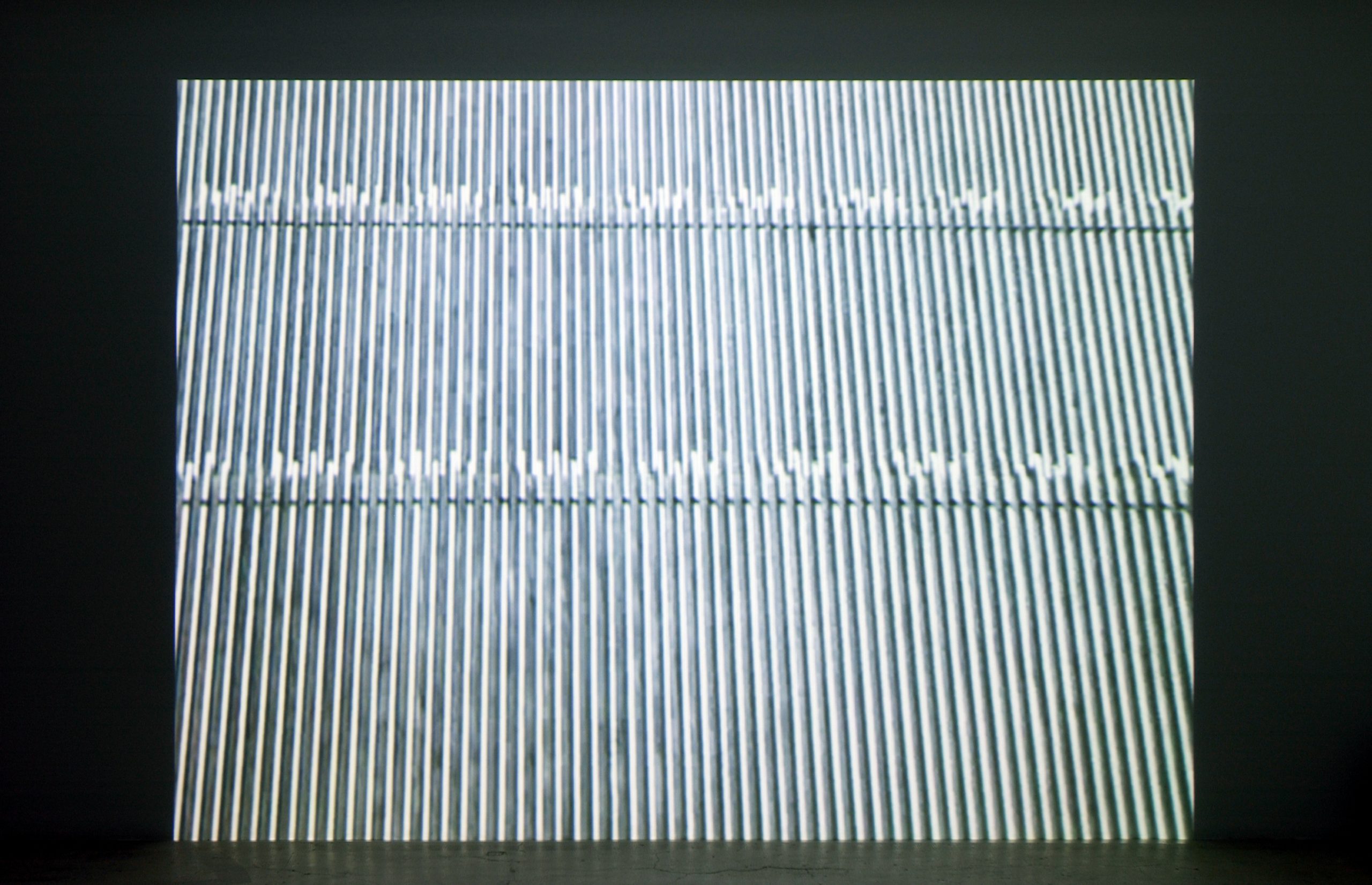
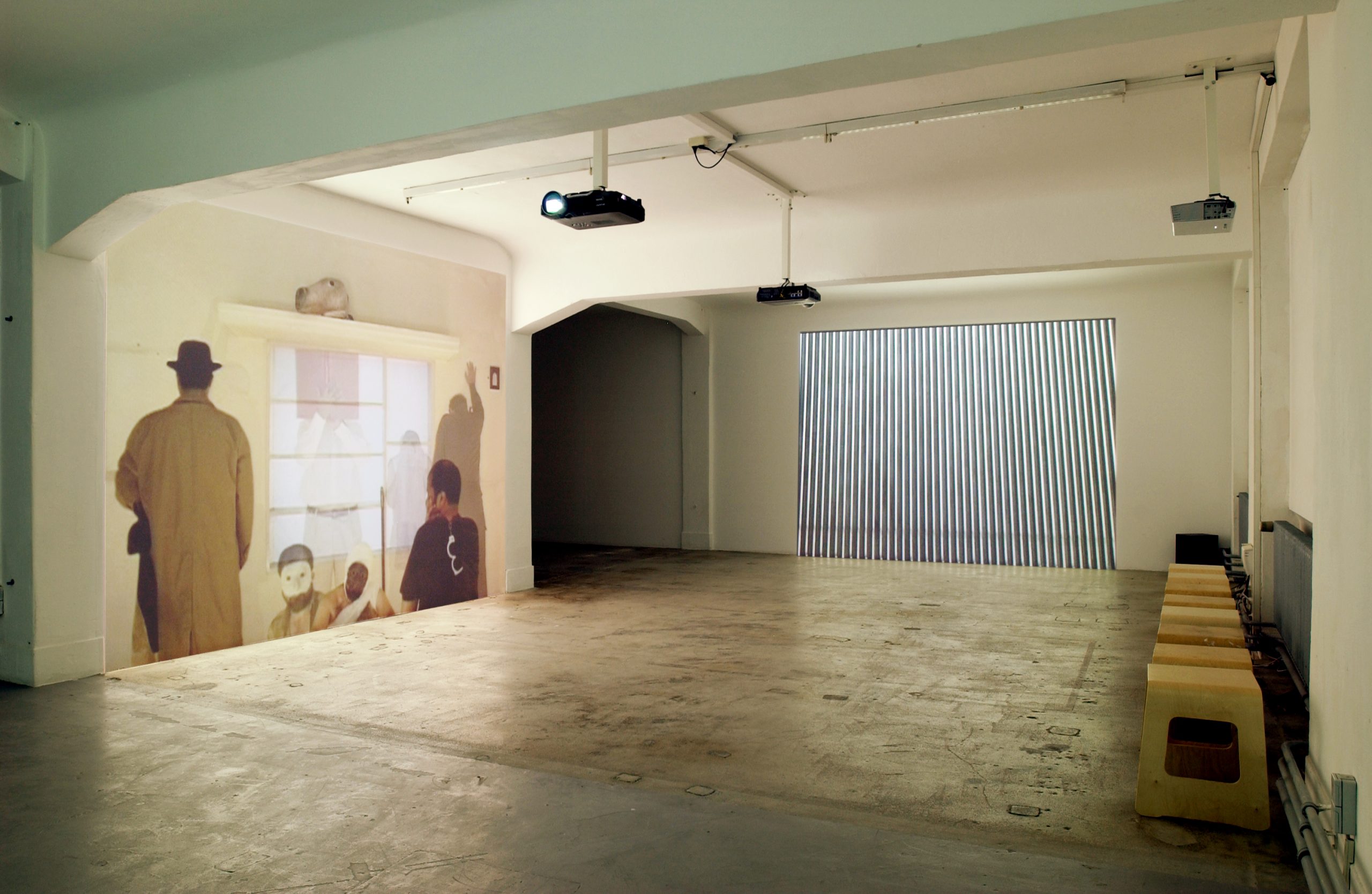
“The impostor can speak more than one kind of truth; he can turn more than one face to the monocle of power. Faced with an enquiry, the impostor’s mask is also a momentary means to breathe easy, to breathe life into an exhausted story about who is who, and who is not. The intensification of scrutiny can sometimes be met with an amplification of guile. Once a tale is told, antecedents produced, a face justified, a door can then be opened and passage granted. The impostor picks up a valise. The journey can now proceed.”
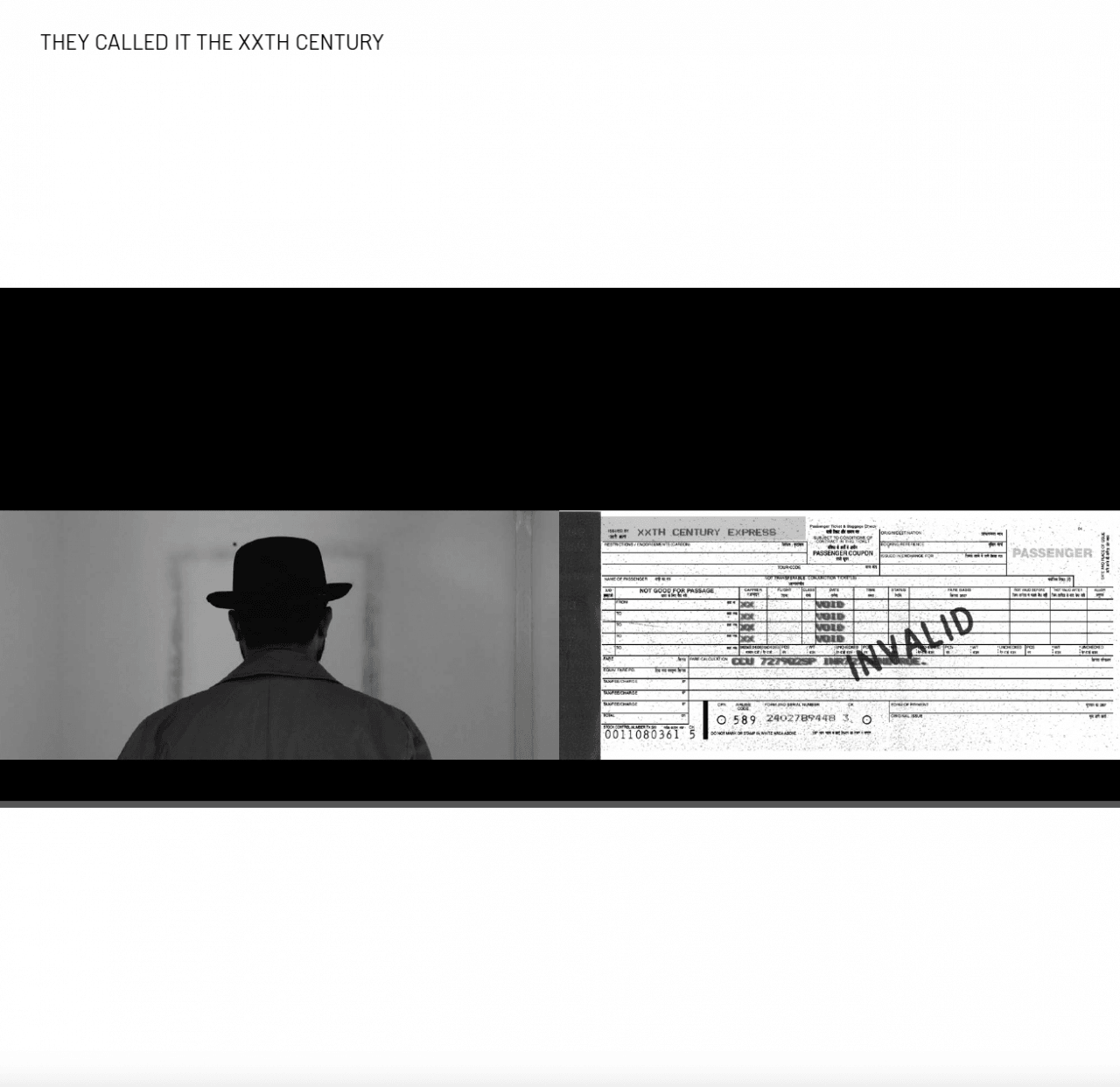
The Great Bare Mat App
App
This app weaves together images from the works produced by Raqs for the exhibition, The Great Bare Mat and Constellation, objects from the Isabella Stewart Gardner Museum’s historic collection, stories fragments from interviews of Raqs by Pieranna Cavalchini (Curator, Contemporary Art, ISGM), texts on and from the work, notes on some objects in the collection, and excerpts from a series of conversations with a musician, a curator, artists, a teacher, a philosopher, an architect, a conservator, a neurologist, and more, curated by Raqs at the museum around the questions – Where Does Nostalgia Take Us? What Does Intelligence Do For Us? What Does Accumulation Do To Us? Why Does Music Move Us?
Cutouts; animation, video loop
Equinox is made by Raqs in response to the collection at the Isabella Stewart Gardner Museum, Boston. The video plays on the sense of the night coming alive with animal forms, and echoes their experience during a flashlight tour of the museum where they sensed the animatedness of the museum’s collection in a very particular way. The animal figures in this video draw from details and objects within the museum’s collection, including paintings, textiles, prints, drawings and sculpture, and from a set of Japanese fables for children printed in the late nineteenth century.
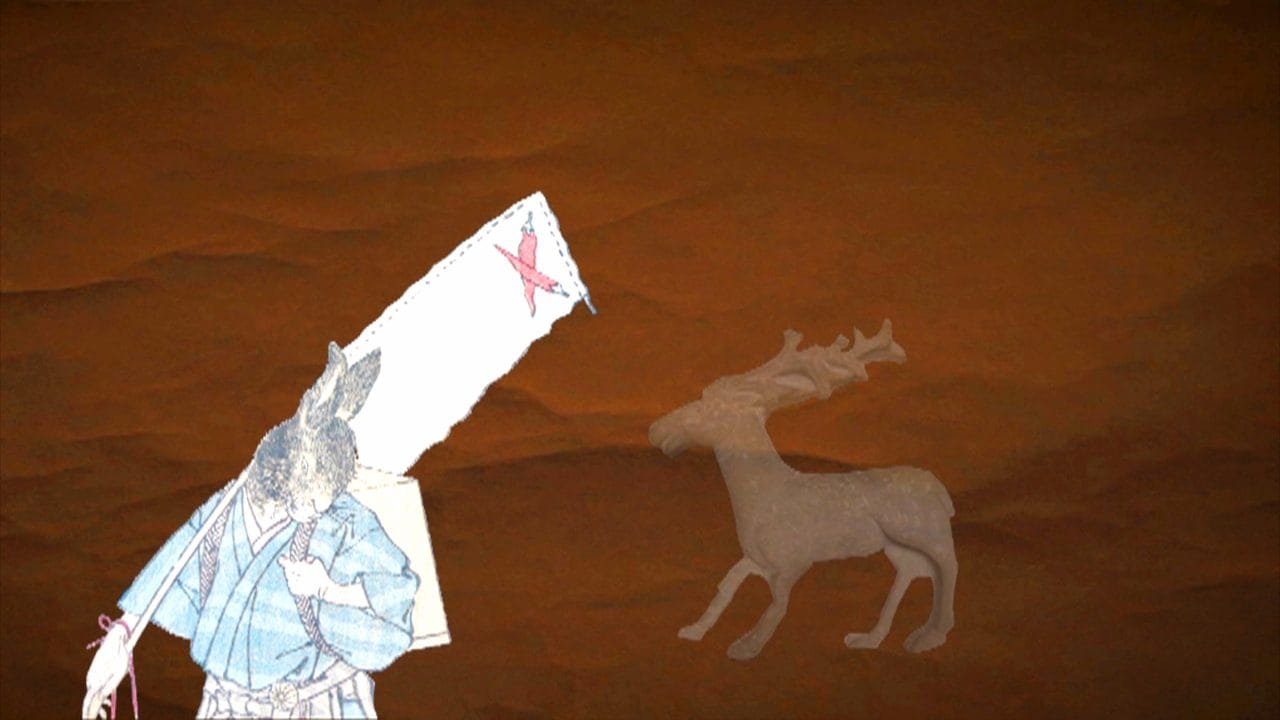
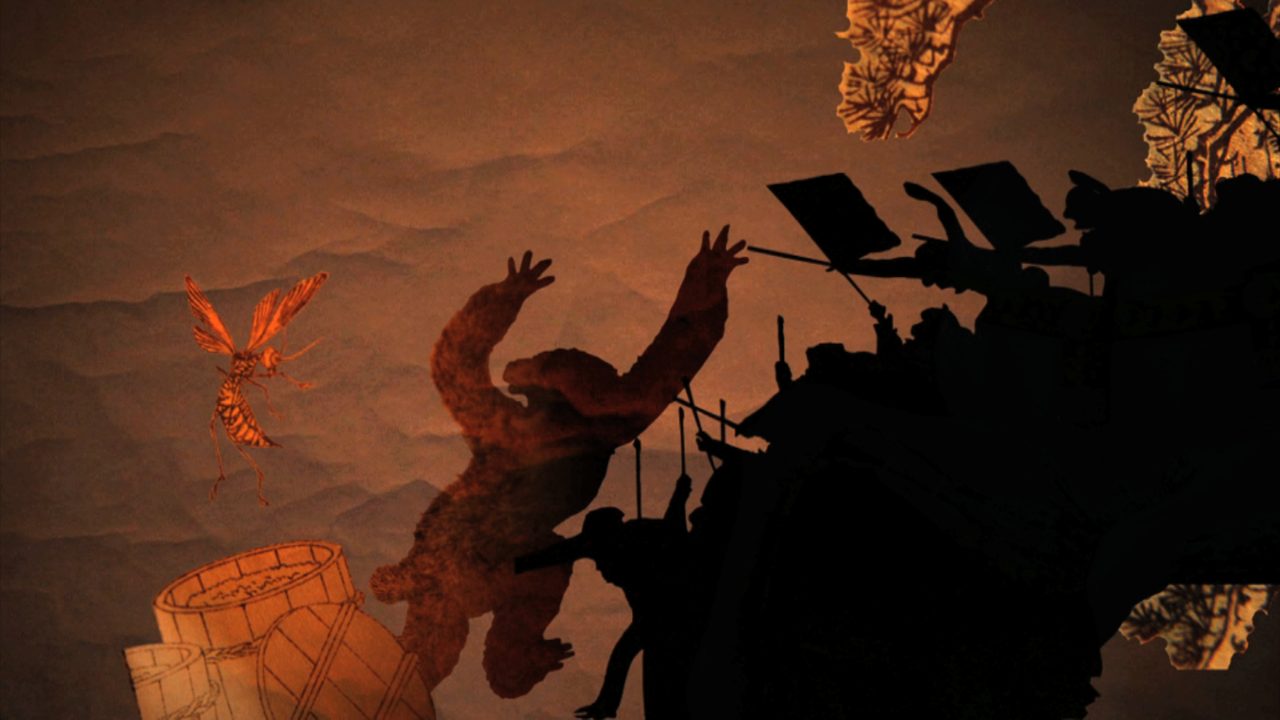
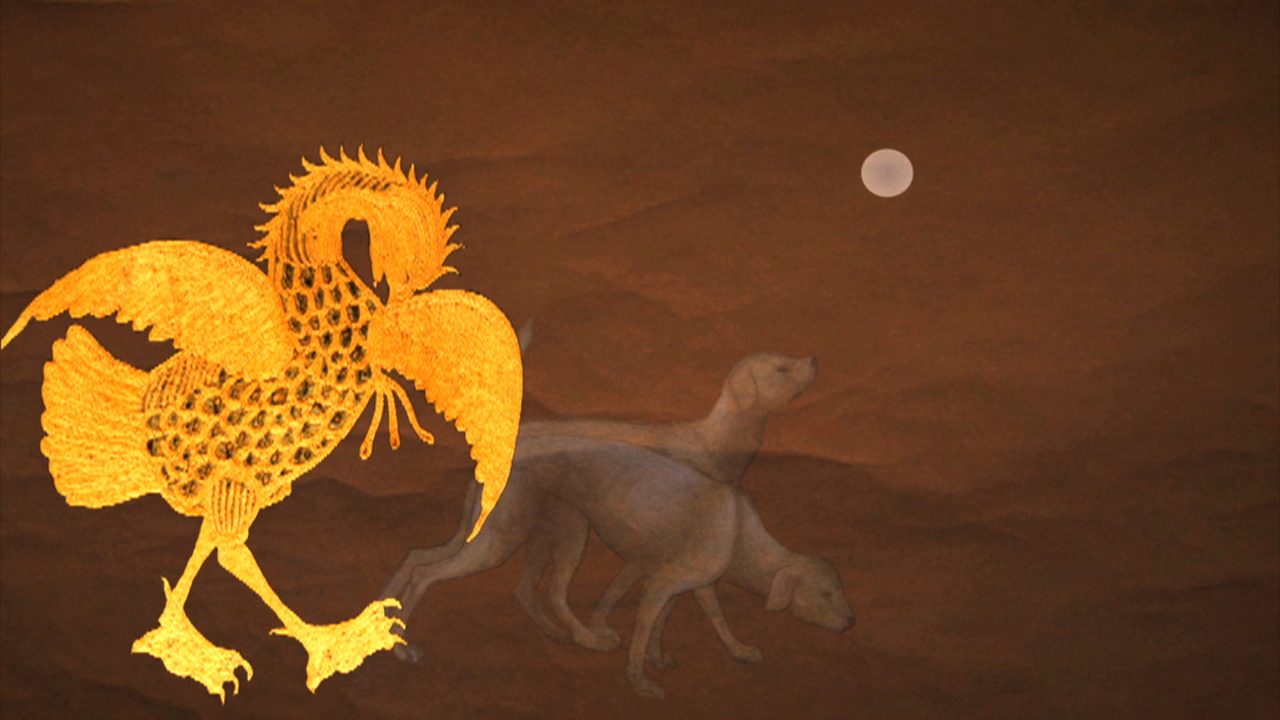
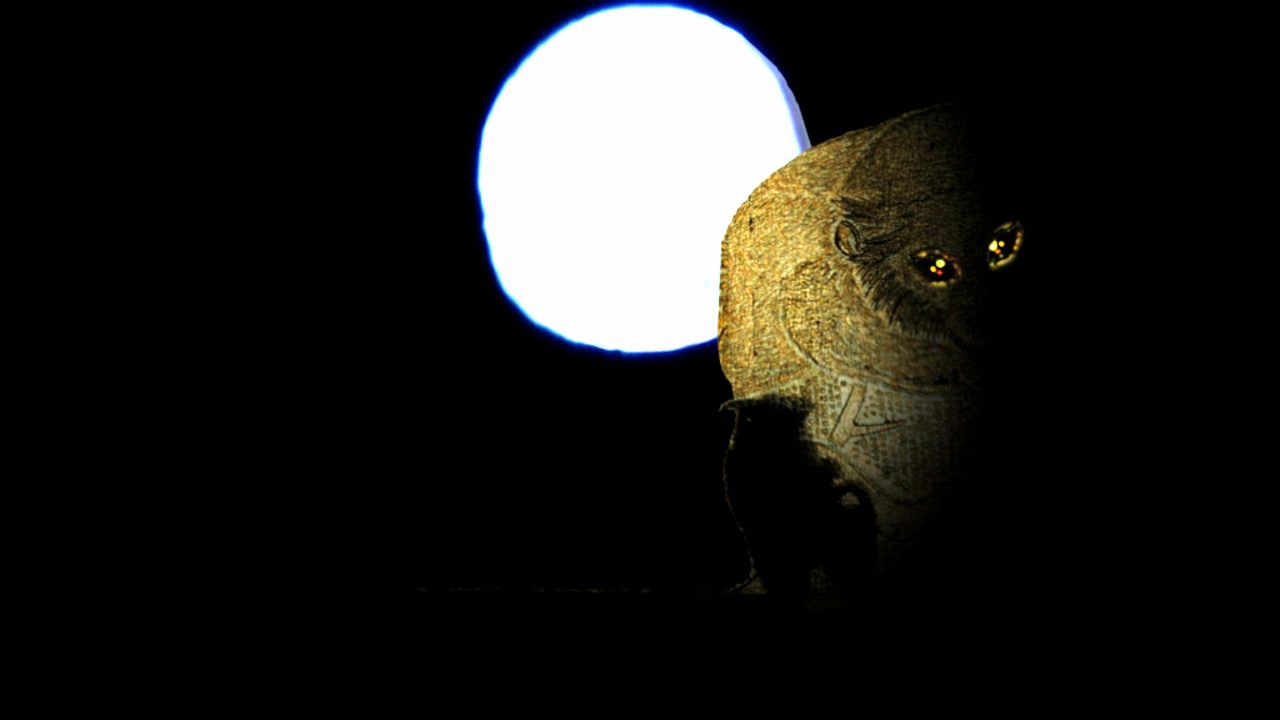
Diagram for the Last International
Video Loop
In 2011-12, while thinking about weaving disparate processes, interests and possibilities of all kinds together, Raqs invited Suraj Rai, a self-taught computer programmer, to create a snapshot of their working and thinking together. Suraj plotted the signal traffic between the three Raqs computers while they sat together in their studio on a typical Delhi afternoon. The snapshot pattern of a moment of the traffic and intercourse between their computers evoked a picture of their world, and of them in the world. A speculative meshwork emerged.
For ‘The Great Bare Mat and Constellation’ this meshwork of lines became the basis for a drawing for a carpet (Design: Amitabh Kumar). The meshwork enveloped a house in ‘House of Everything and Nothing’ (Outset, New Delhi, 2013), and for ‘The Autodidact’s Transport’, the lines encased a metro carriage (design Mansoor Ali). The video, ‘Diagram for the Last International’, has been edited by Rajan Singh and Manas Jyoti Baruah.
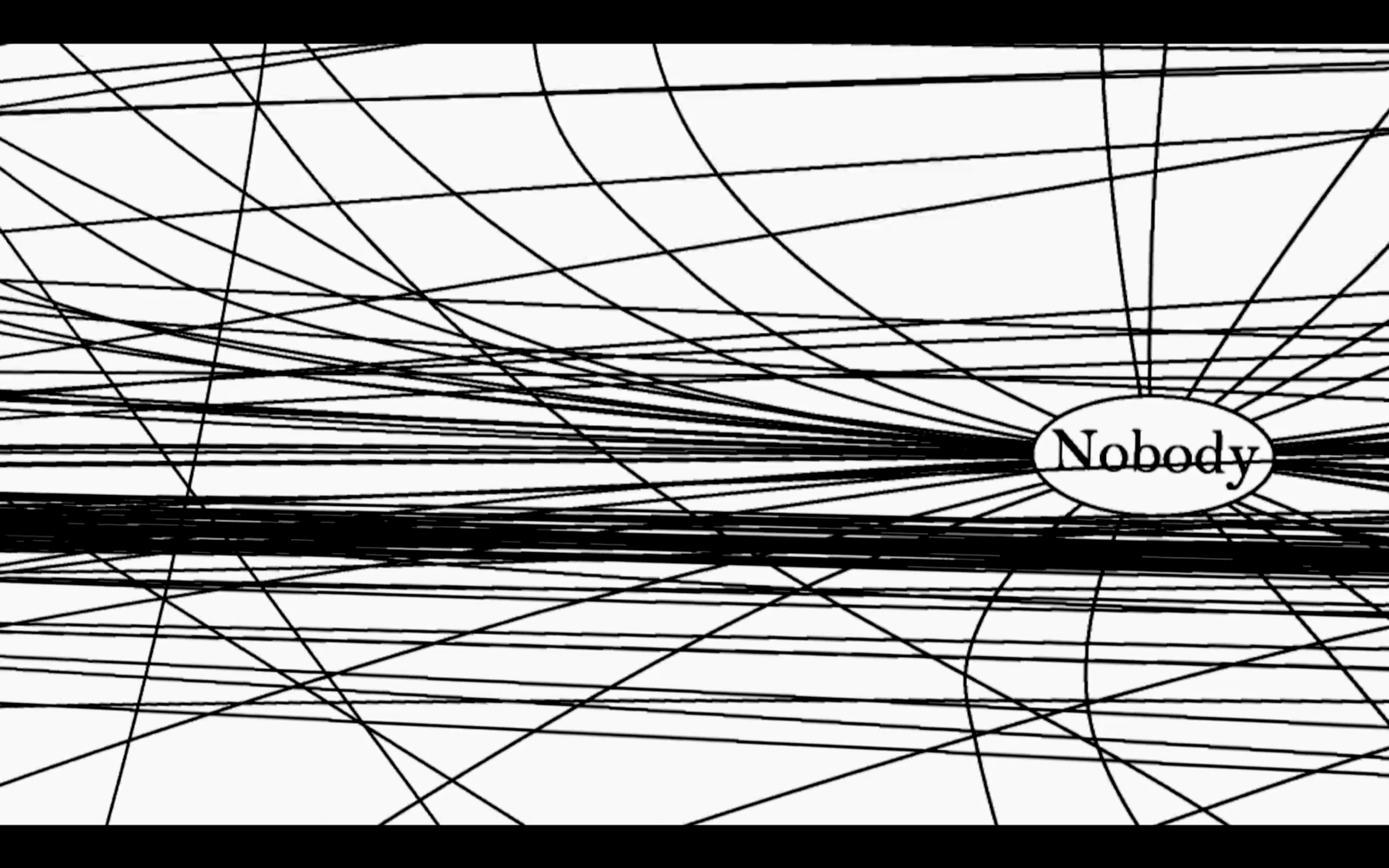
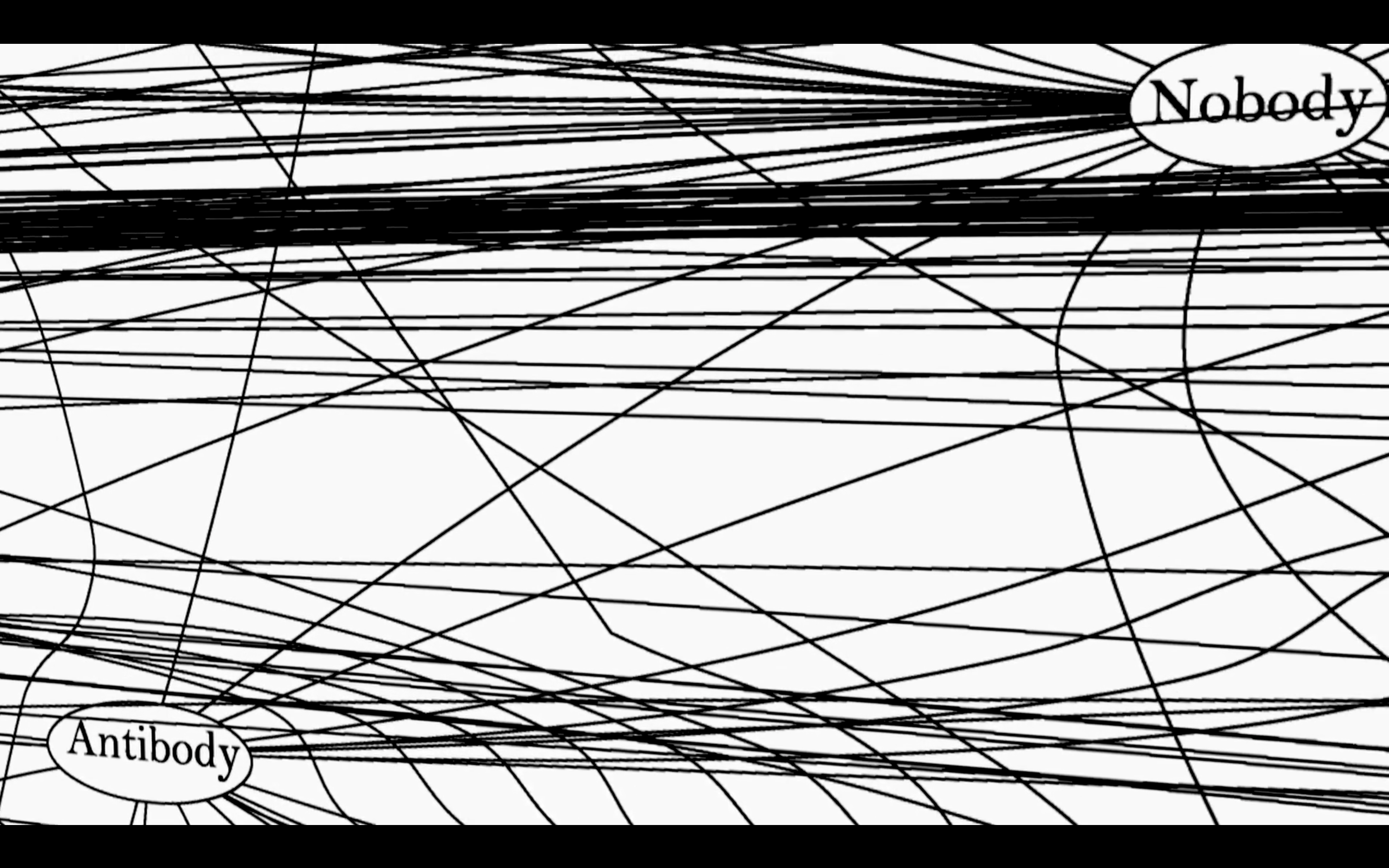
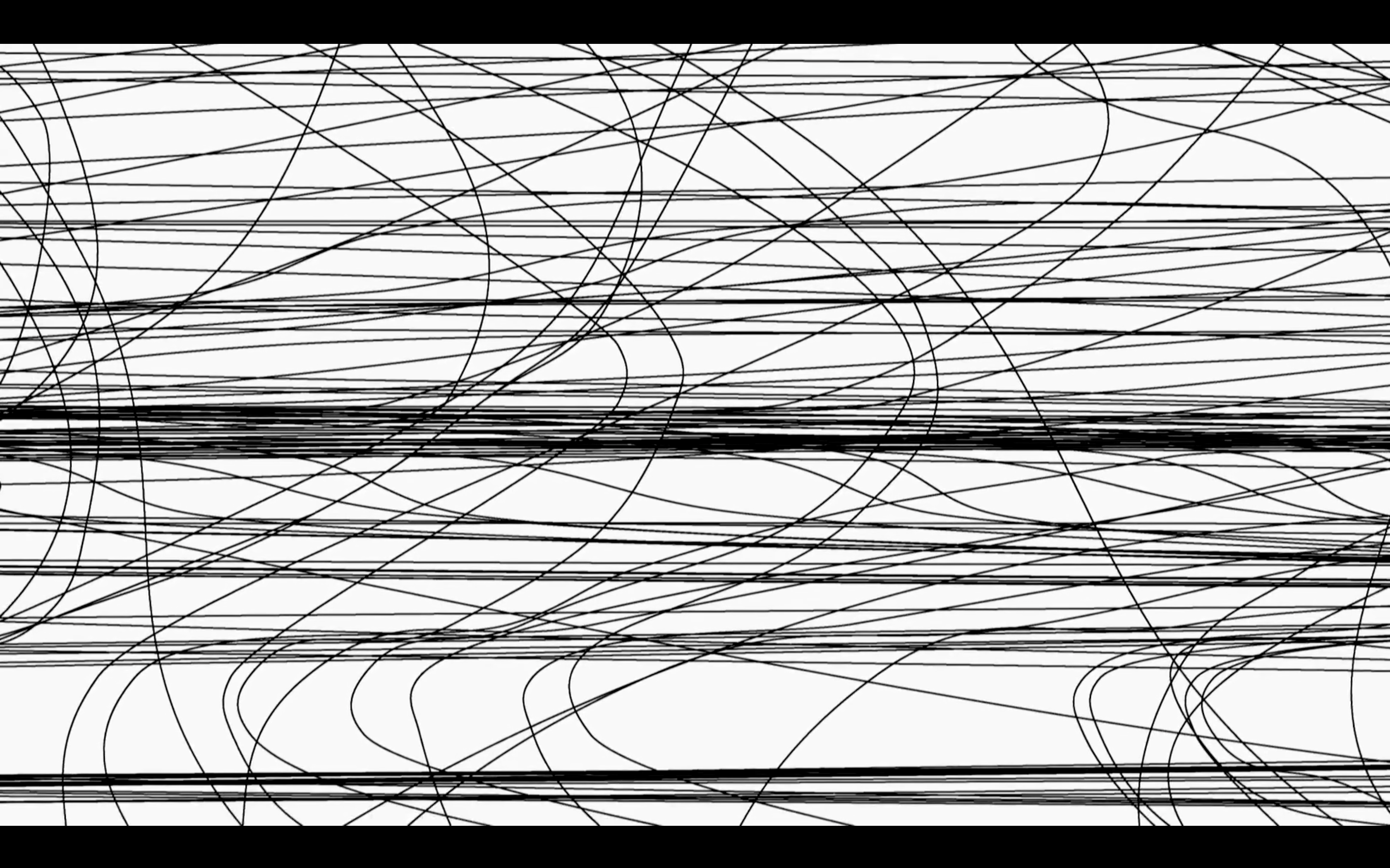
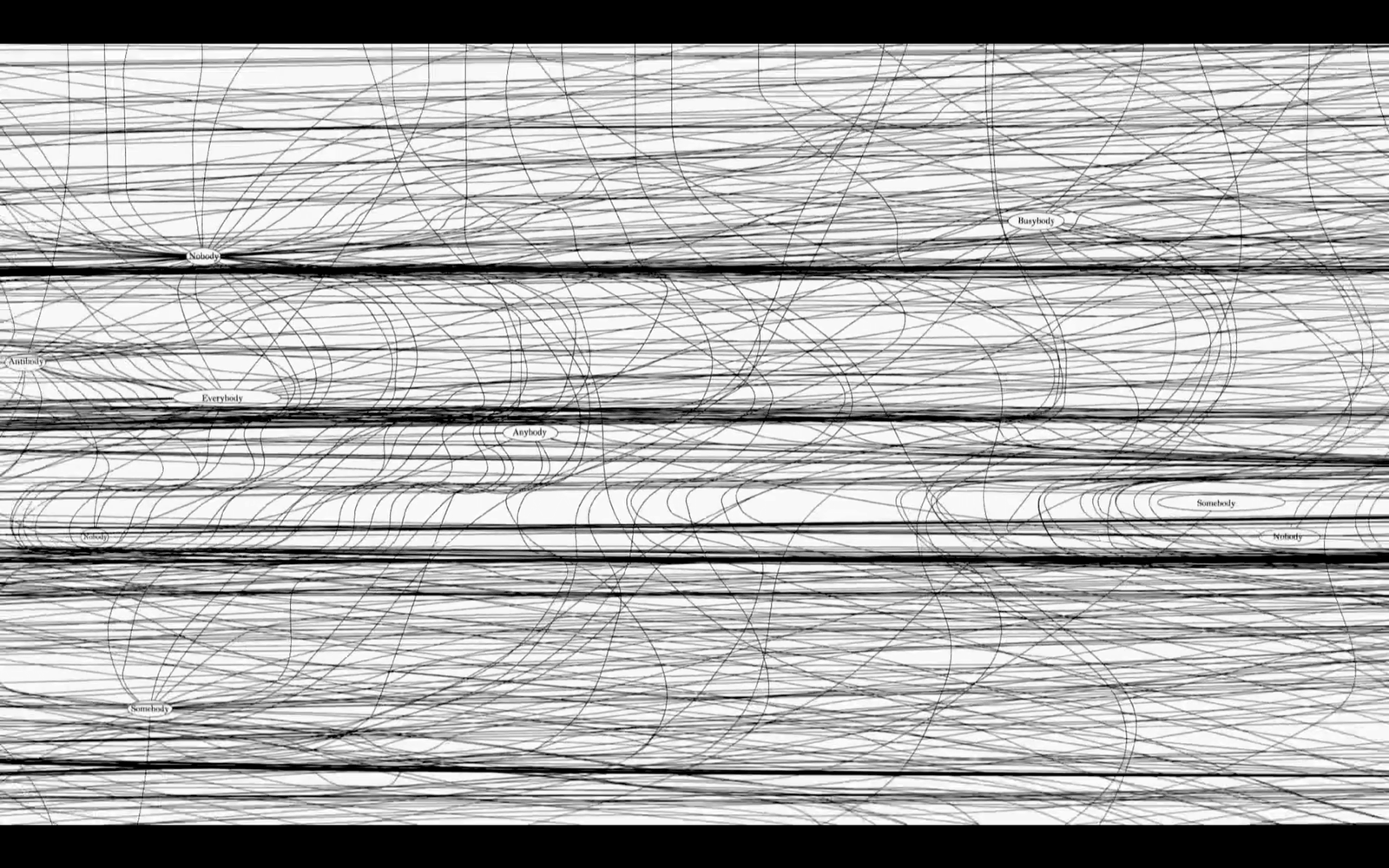
Video Loop
Henri Cartier-Bresson took a photograph of a bank run in Shanghai in December 1948: A crowd of people desperate to get their money out of a bank in order to buy gold in anticipation of an imminent collapse of the value of paper money in the lead up to the take-over of Shanghai by the People’s Liberation Army.
Every bank-run is propelled on the currents of a self-fulfilling prophecy: As people lose confidence in the value of money, they begin withdrawing money from banks in order to try and convert it into gold. This leads to a collapse of a bank’s worth; panic spreads between banks. And so, cause becomes effect becomes cause. The anticipation of the future produces conditions in the present that lead to the anticipated future. Time folds in on itself like a snake biting its own tail.
In revisiting and re-staging Cartier Bresson’s photograph in Shanghai, Raqs meet the conditions of the self-fulfilling prophecy invoked by the event captured in the original image. Cartier-Bresson’s decisive moment breaks its banks and seeks the custody of other hands. Midwived by other eyes and cameras, the image re-incarnates as its own breathing and vivid clone, close to where we are today. The memory of one moment of crisis is transposed on to the reading of another. Time folds in on itself, again.
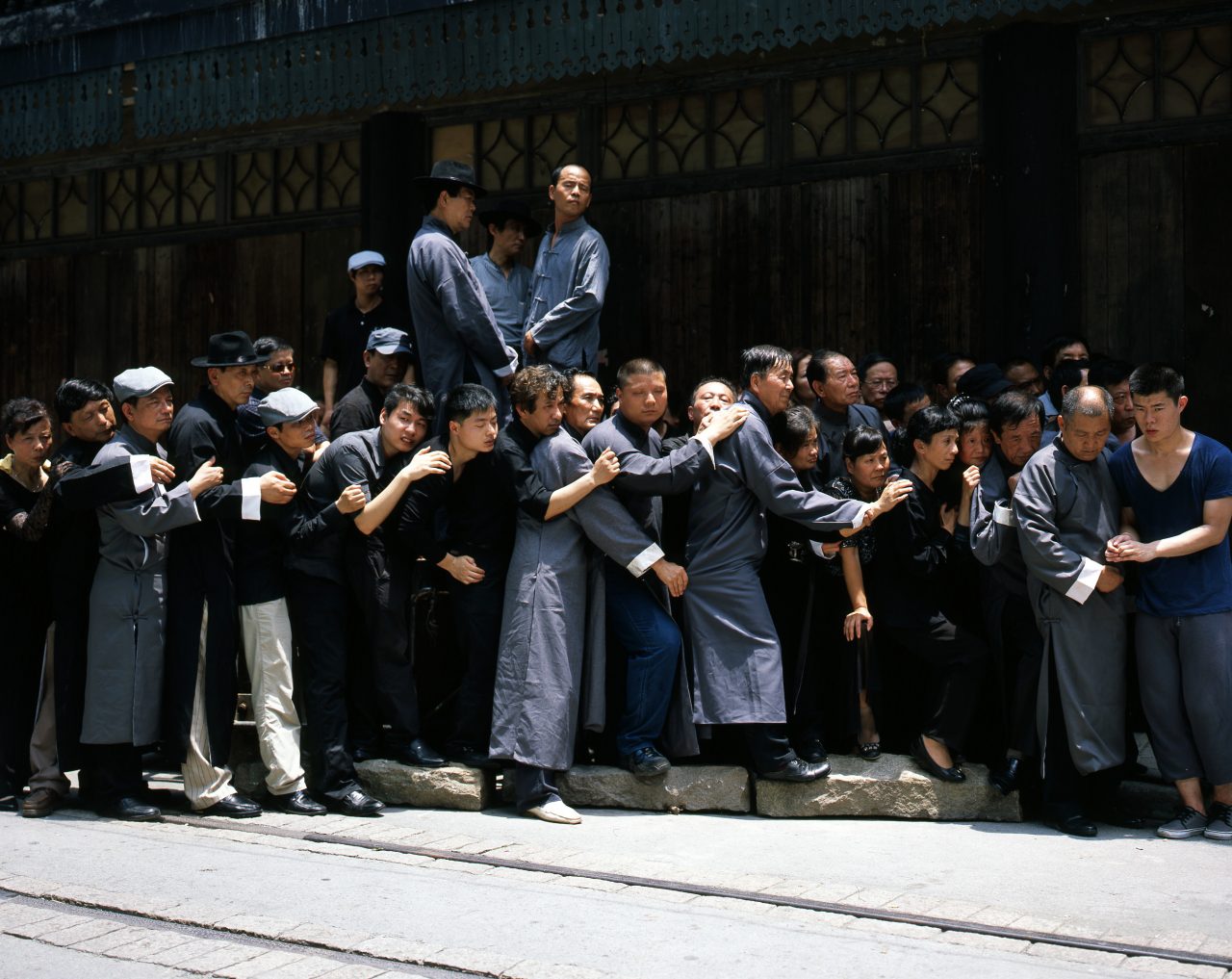
Clock, nameplate, tape
The history of clock-making saw a definite turn when devices for understanding time shifted away from the fluid principles of ancient Chinese water and incense clocks – for which time was a continuum, thus making it more difficult to surgically separate past and present, then and now – to clocks whose ticking seconds rendered a conceptual barricade between each unit, its predecessor and its follower. This is what makes now seem so alien to then. Paradoxically, it opens out another zone of discomfort. Different places share the same time because of the accident of longitude. In a syncopated sort of way, we are “contemporaneous” with other times and spaces. Clocks in London and Lagos show the same time. And yet, the experience of “now” in London and Lagos may not feel the same at all. What does it mean to be living in these times, in these quickening hours, these accumulating minutes, these multiplying seconds, here, now?
For ‘Asamayavali/Untimely Calendar’, the clock gives the time of Kiribati, the first land on Earth to switch the calendar over to 2000, and which could be the first place on this planet to disappear with rising sea levels because of global warming.

Structures, paper, sound, gold wall paint, video (43 ft)
“Will you, beloved stranger?” is a performance piece for two readers in a designed setting featuring a rendition of two bodies of poetic work — those of the Israeli poet Yehuda Amichai (writing in Hebrew) and the Palestinian poet Mahmoud Darwish (writing in Arabic). This work parses these two bodies of text in English to create a continuous stream. A fragment taken from one set of poems (say, Darwish) is followed by fragment of another (say, Amichai). The act of continuous reading emphasizes the difficulty of the absent conversation it straddles. This new miscegnated rescension of a fragmentary Amichai-Darwish corpus has been incised as perforation on to translucent sheets of paper in Hebrew and Arabic and displayed on structures and frames designed by Efrat-Kowalsky Architects in consultation with Raqs. In this instance, the two readers are a native Hebrew speaker and a native Arabic speaker.
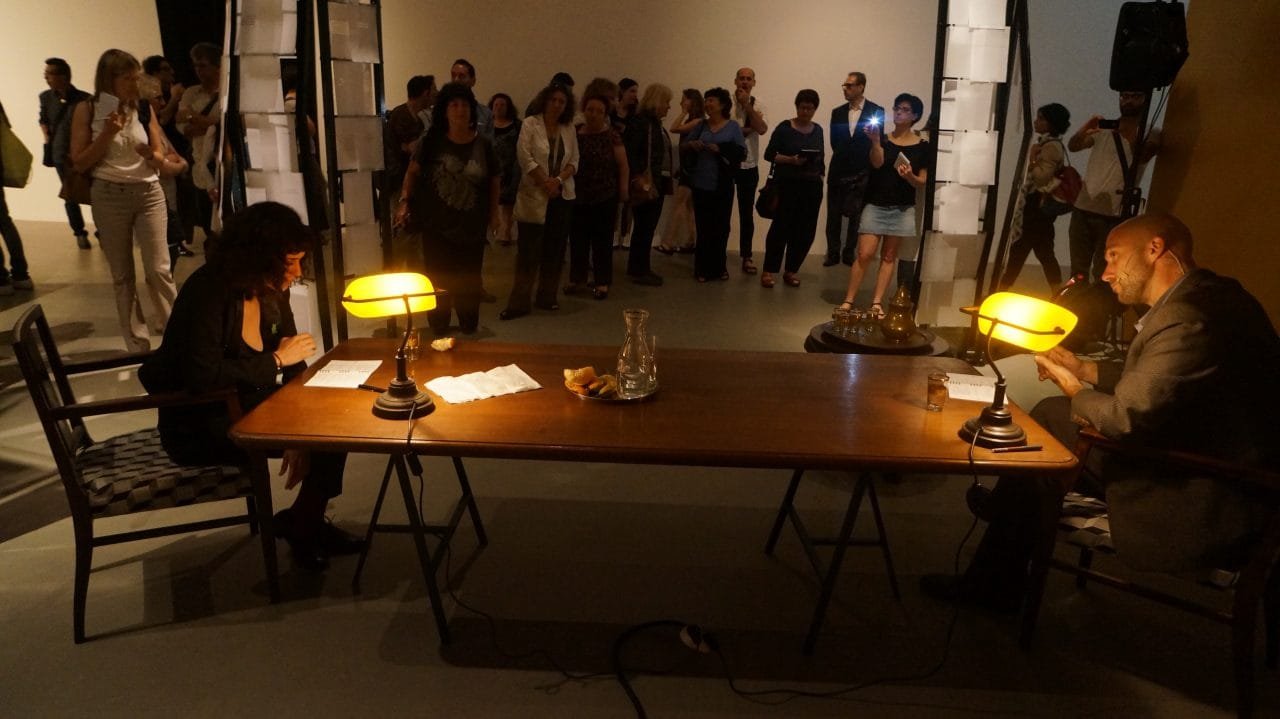
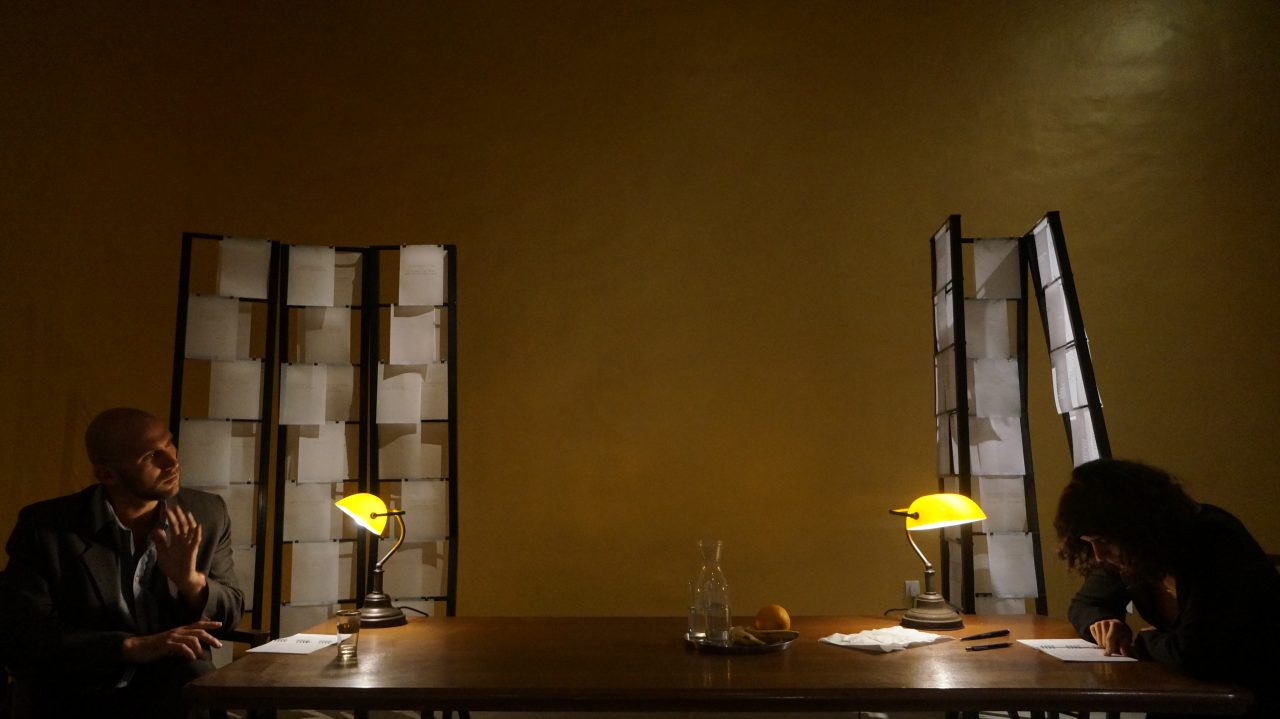
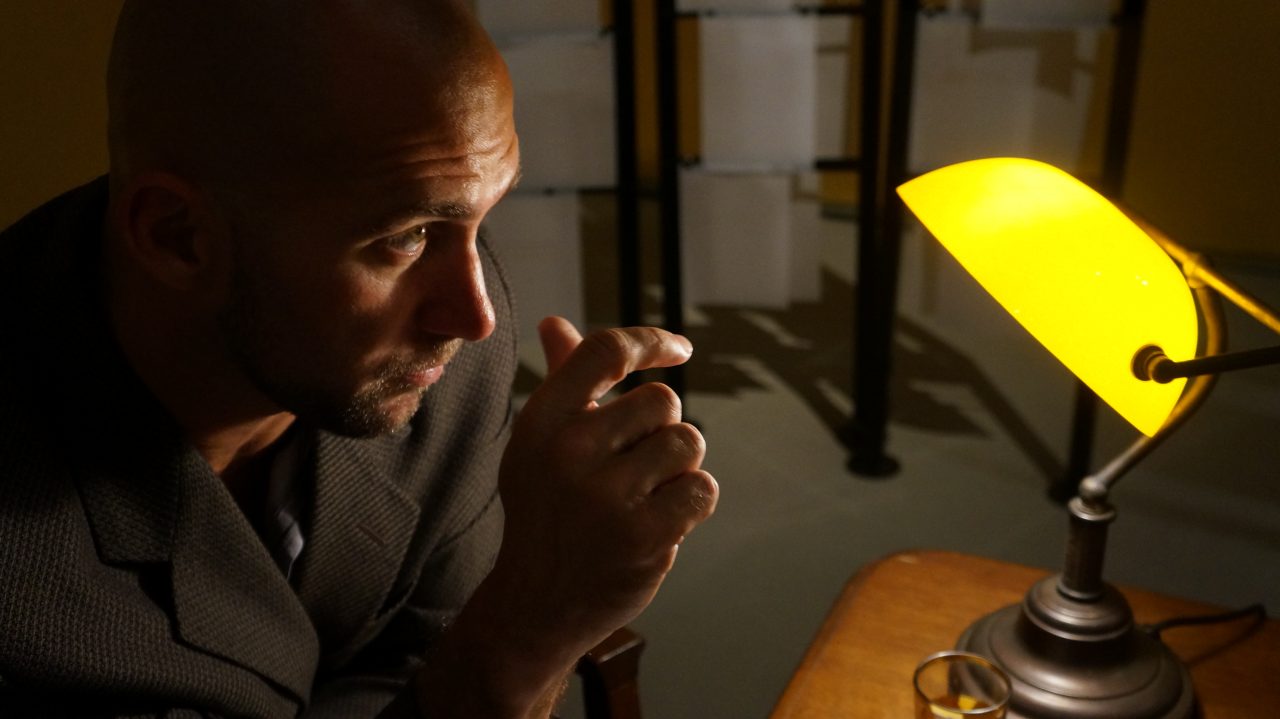
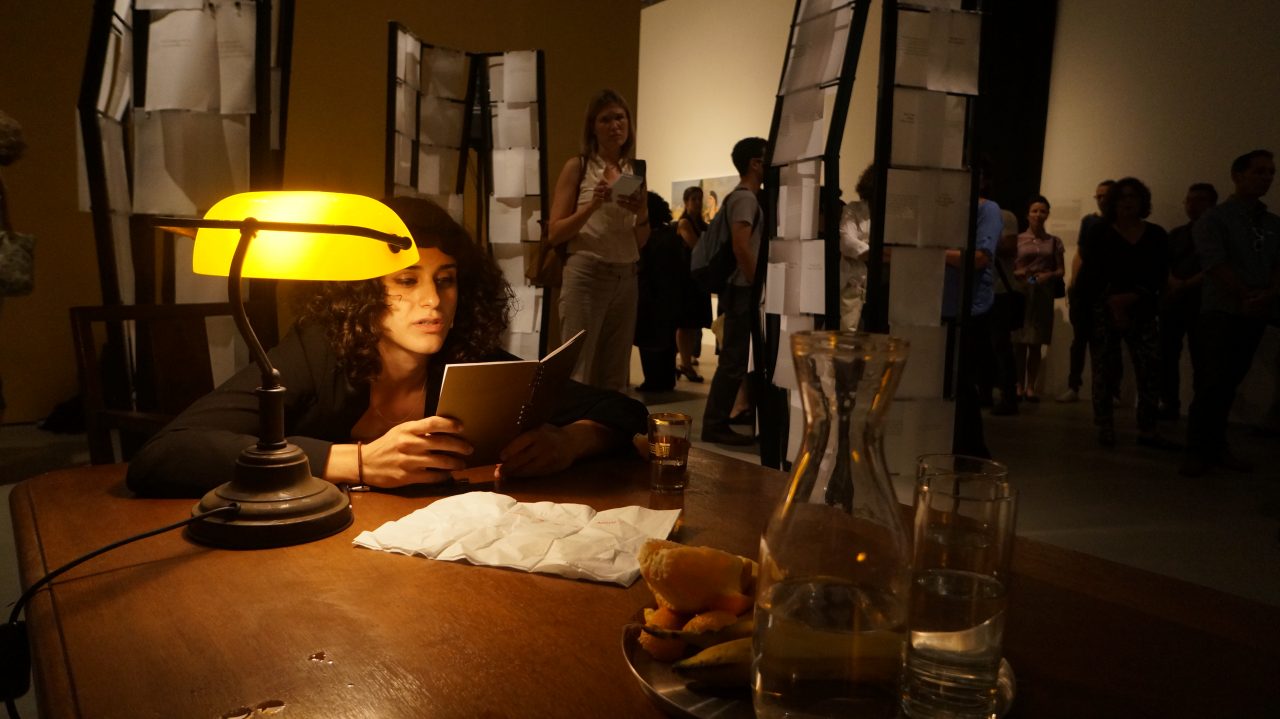
Video loop (6 In)
In the present world, ever since the adoption of Greenwich Mean Time, the system of longitudes beginning and ending at an arbitrarily decided degree zero located at the Greenwich Observatory near London creates a notional global central axis and degrees of peripherality. This convention is based on an arbitrary decision that indexed Great Britain’s power during the nineteenth century, but in truth, the location of the prime meridian could be anywhere at all. One could, for instance take any point in the Arabian desert, draw a line and declare it to be a prime meridian, insisting that the periphery of the desert is now a new centre of the world. It is a matter of drawing, erasing, and re-drawing, almost as a repetitive compulsion – lines in the sand.
In this exhibition, the video is projected on sculptures of Yaksha and Yakshi, made with Rahul Kumar.
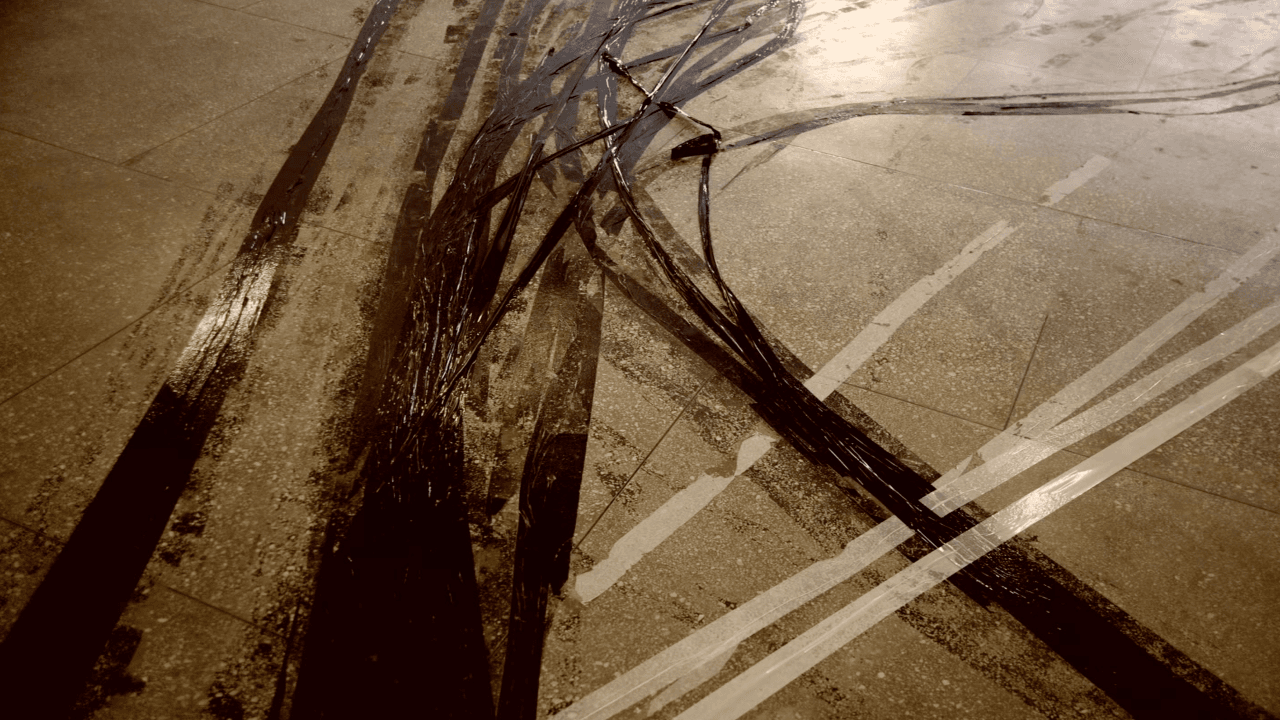
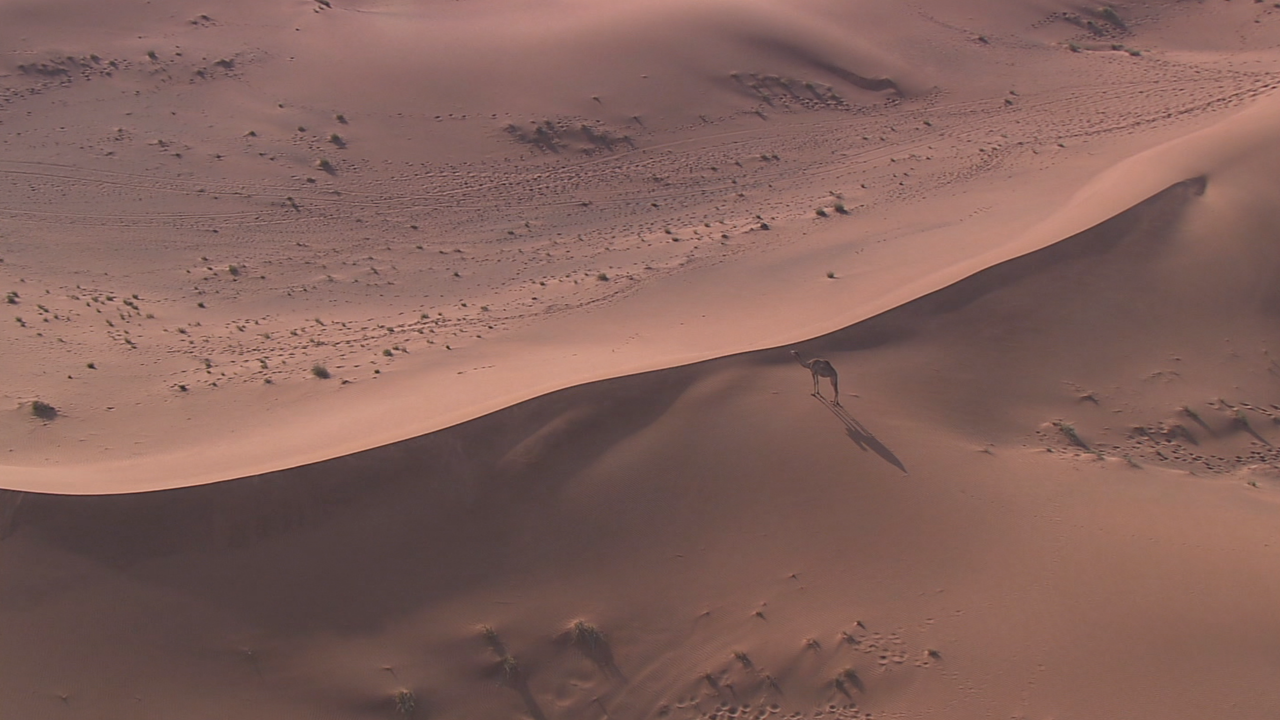
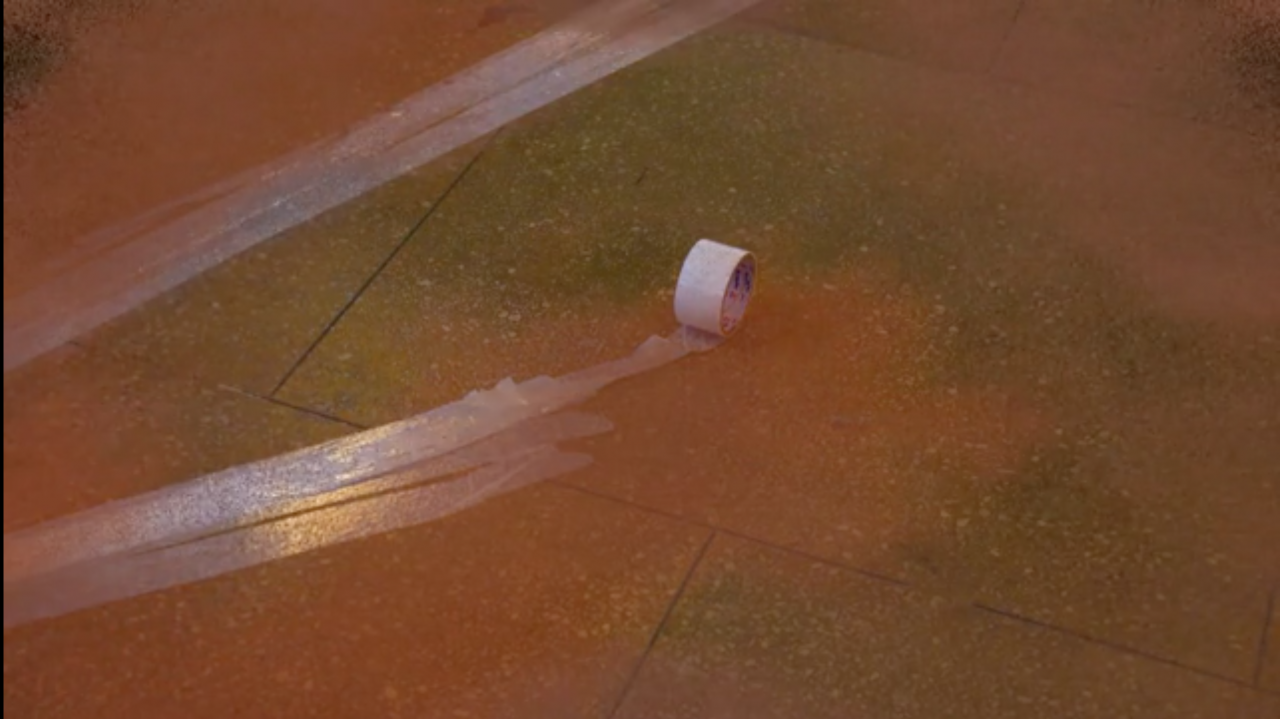
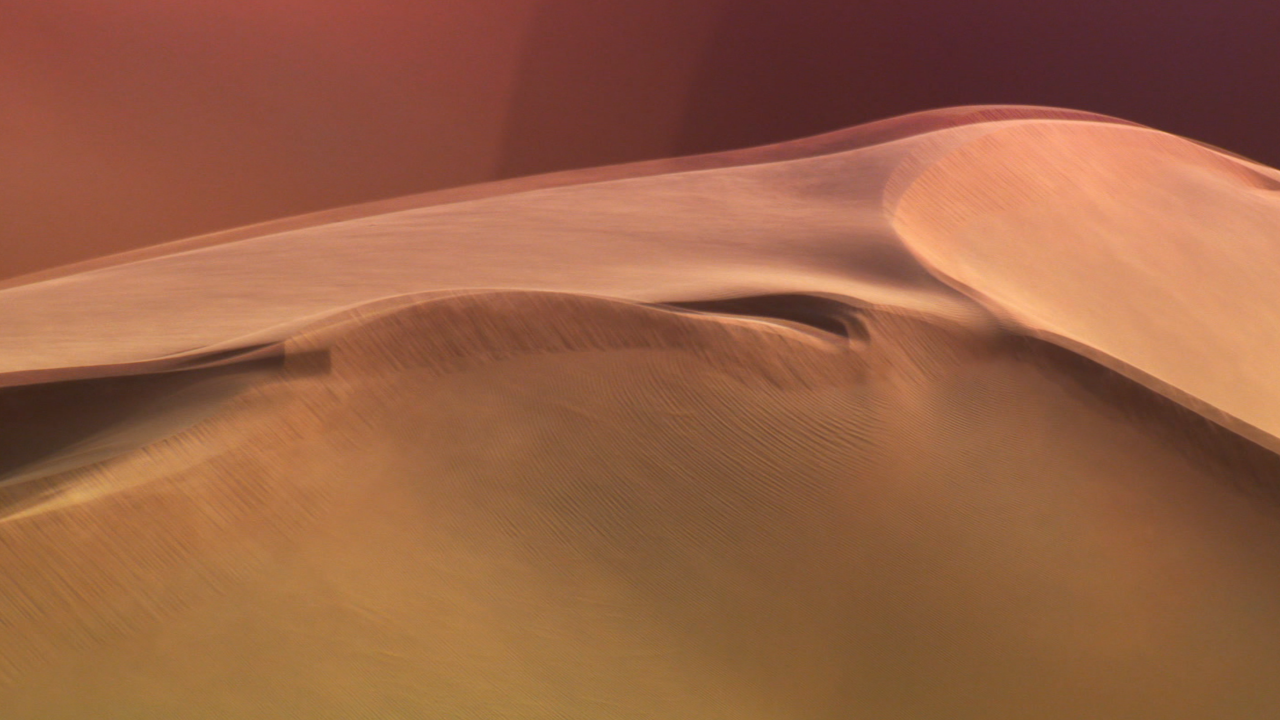
5 Video screens, audio, and steel armature
5 Pieces of Evidence reflects on missing persons, urban myths, transitoriness, maps, and global networks. The five screens are narratively organized along the lines of a “whodunit.” Missing persons notices, street maps, demographic statistics, and images of pipelines, rail tracks, harbours, and city- scapes evoke a multi-layered set of speculations on the way urban spaces stage everyday “disappearances.”
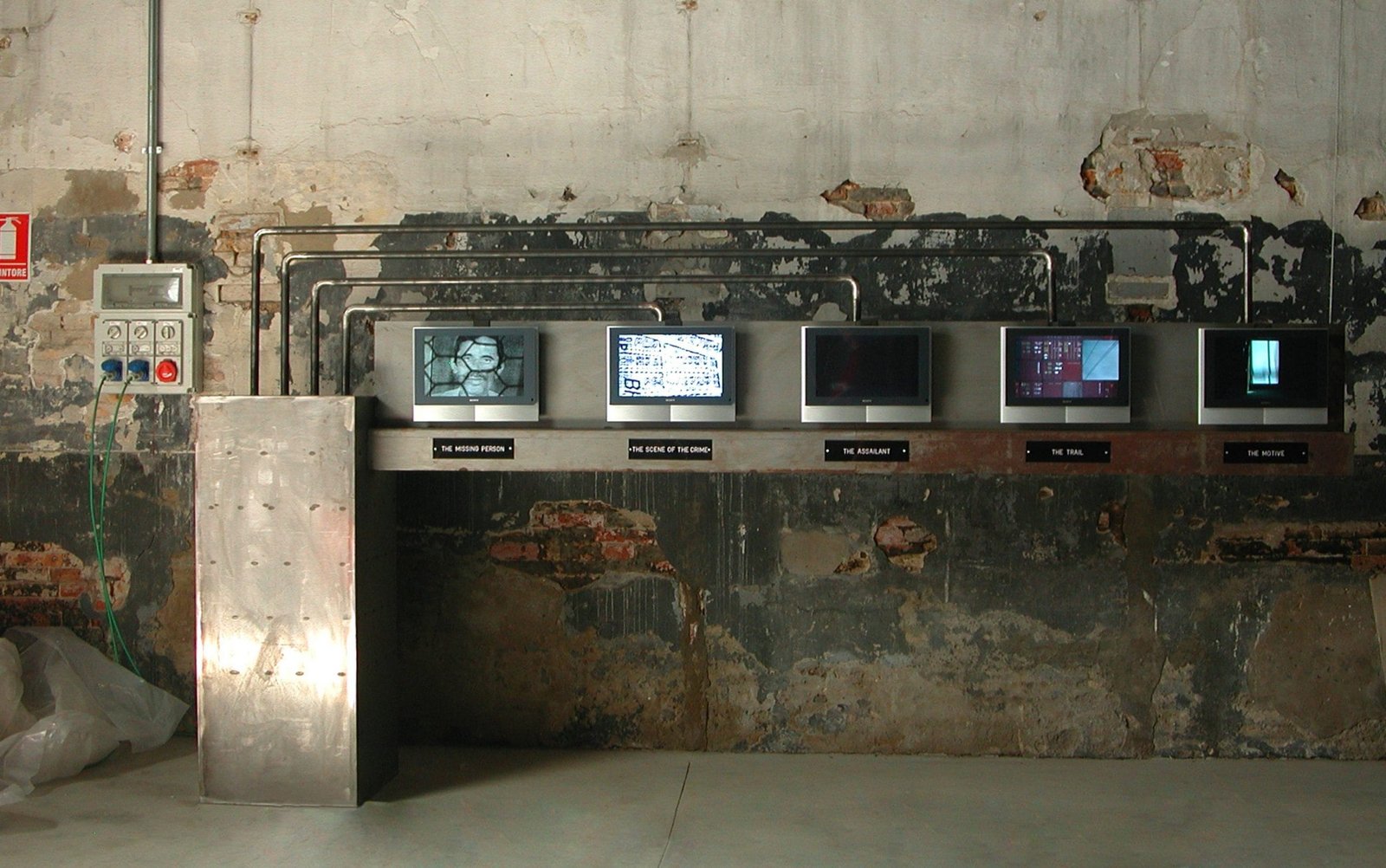
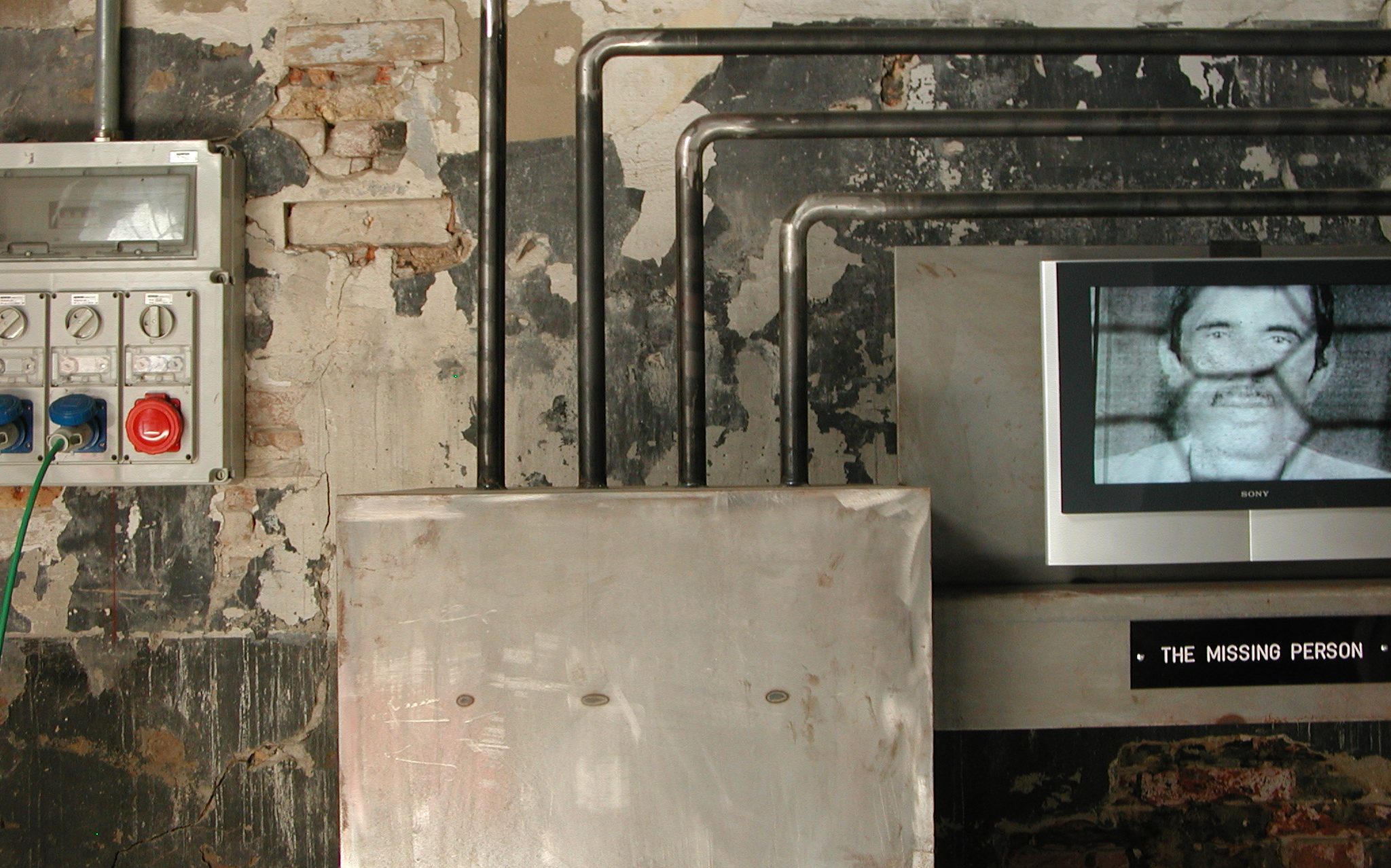
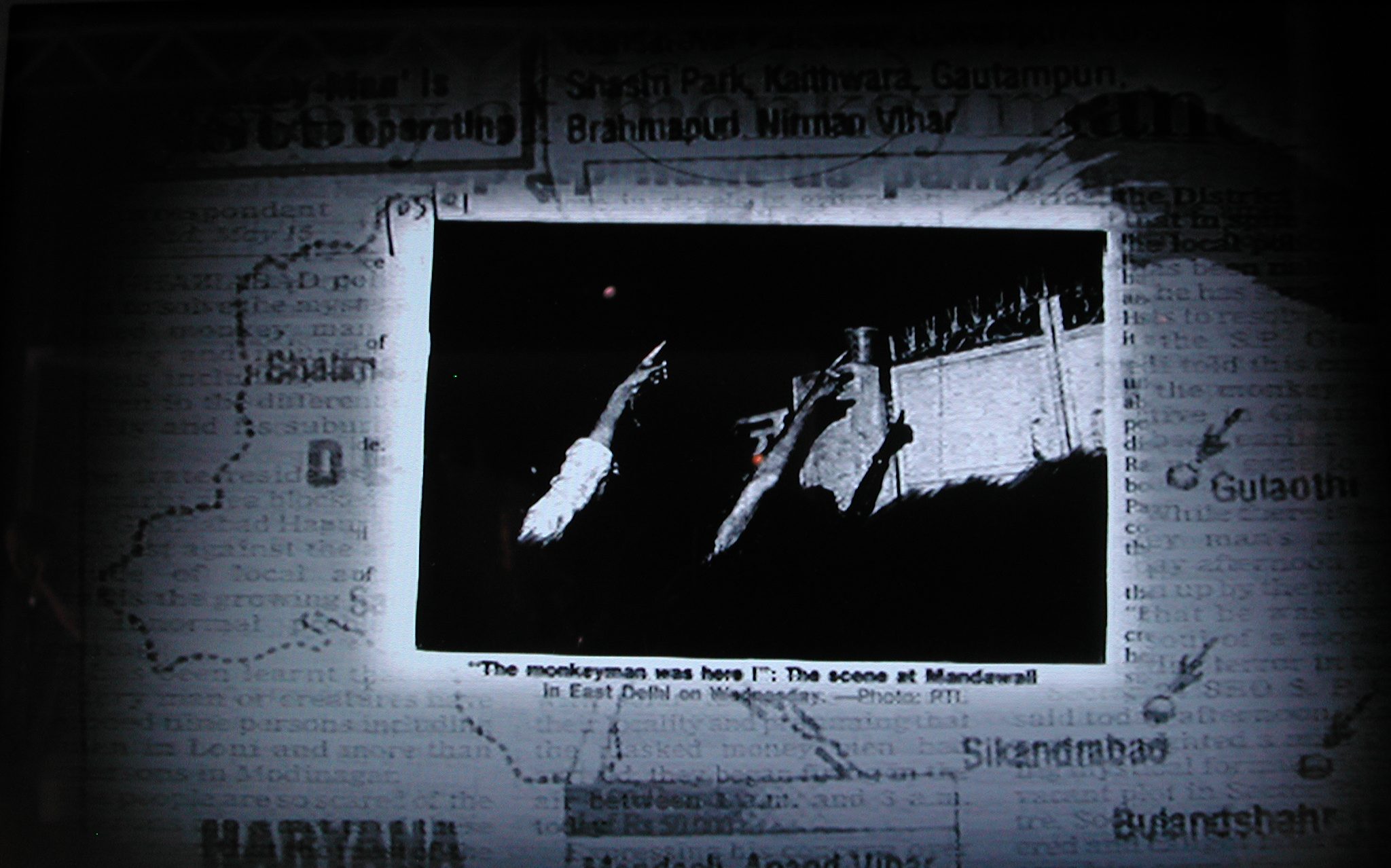
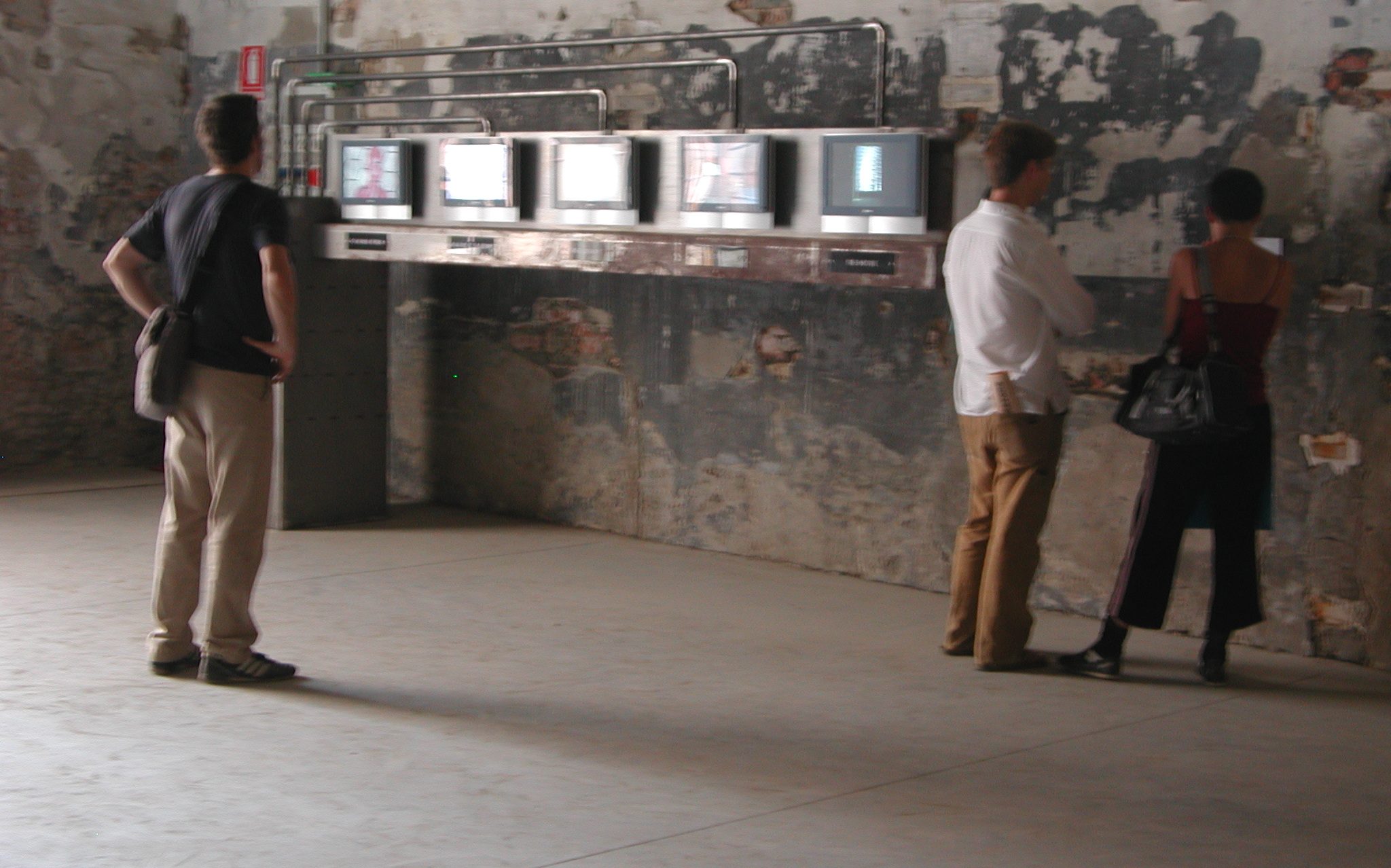
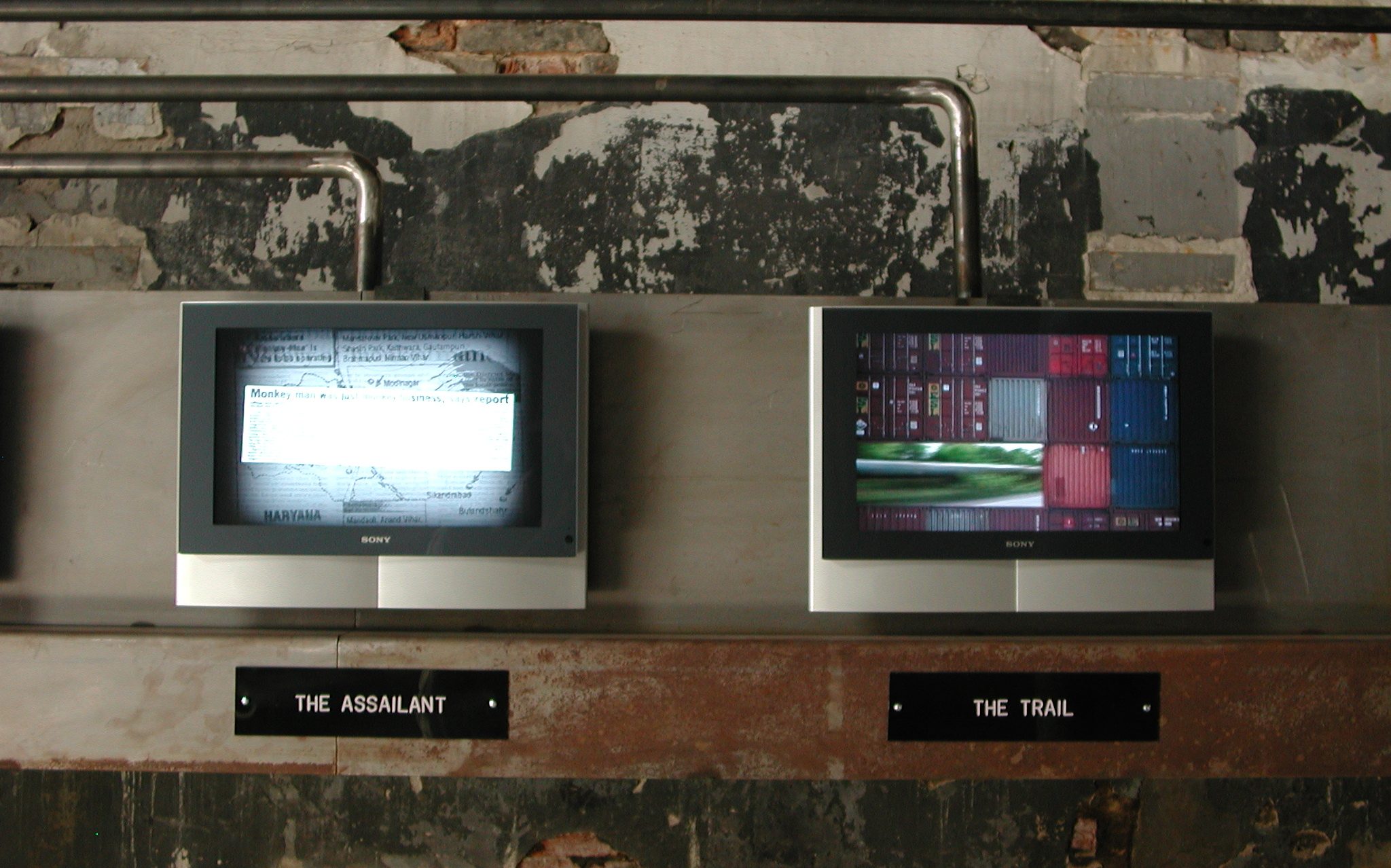
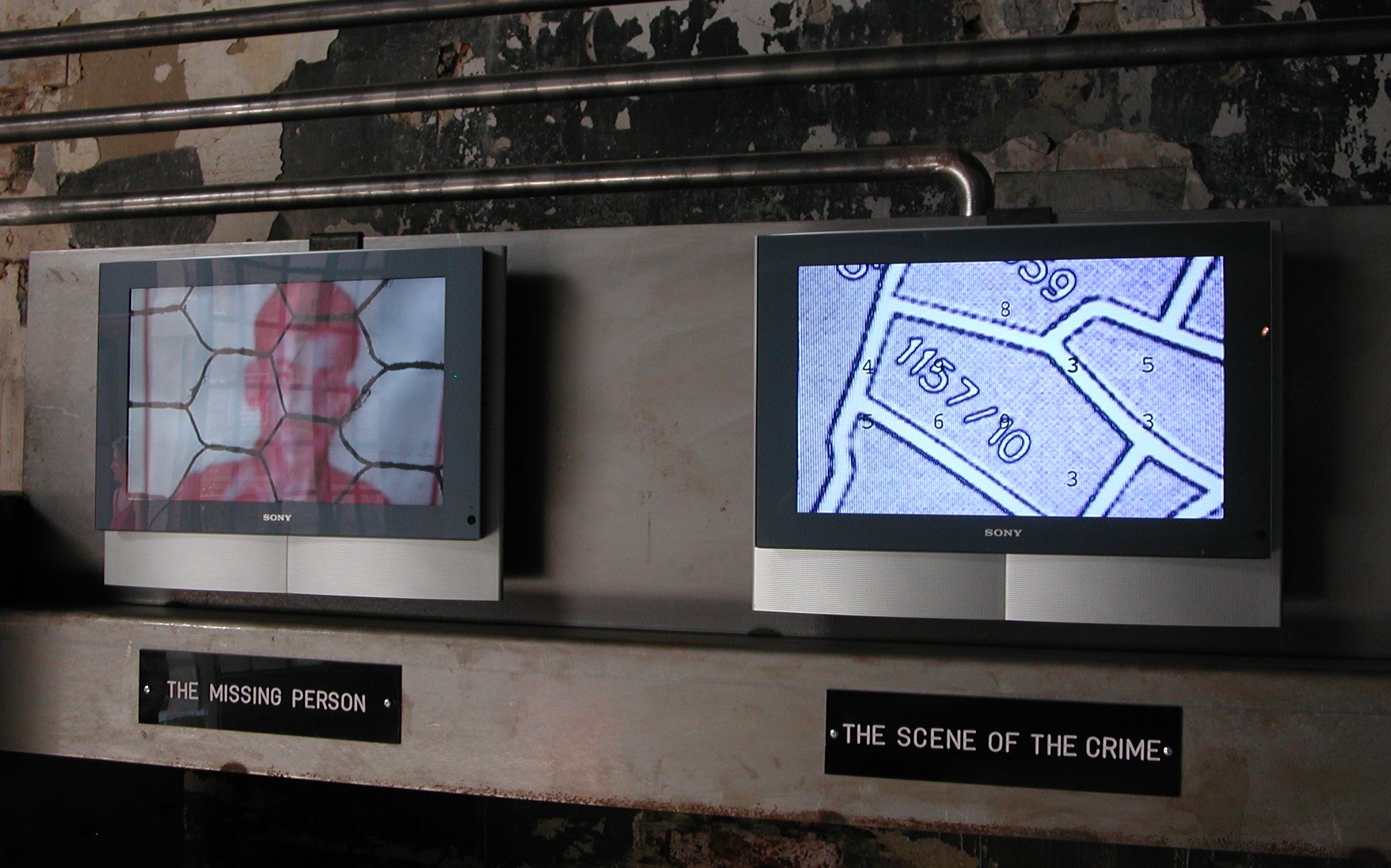
An Afternoon Unregistered on the Richter Scale
Looped video projection (3:30 minutes)
An Afternoon Unregistered on the Richter Scale is a looped video projection of an archived photographic image in which a room full of surveyors is transformed through a series of subtle alterations. The photograph in question is titled Examining Room of the Duffing Section of the Photographic Department of the Survey of India. It was taken in 1911 in Calcutta by British photographer James Waterhouse.



Drawing Animation
In the world of labour, men and women, animals and devices come together and diverge in all sorts of interesting ways. The coupling and uncoupling of gears and wings, of claws and hands, of hooves and feet, of algorithms and interfaces, of prostheses and parantheses – in these we find the stirrings of a twilight language. Machine drawings metamorphose into eccentric beasts and birds and make their way into the future. Future plans dance, inaugurating a new biology of animate fragments, the nuts and bolts of reveries, and the odds and ends of desires that leap off the page of our time.



A Fortunate Spell of Pleasant Amnesia
Flex print (10 x 2 ft)
The work speaks to how we encounter violence, and how we need not.
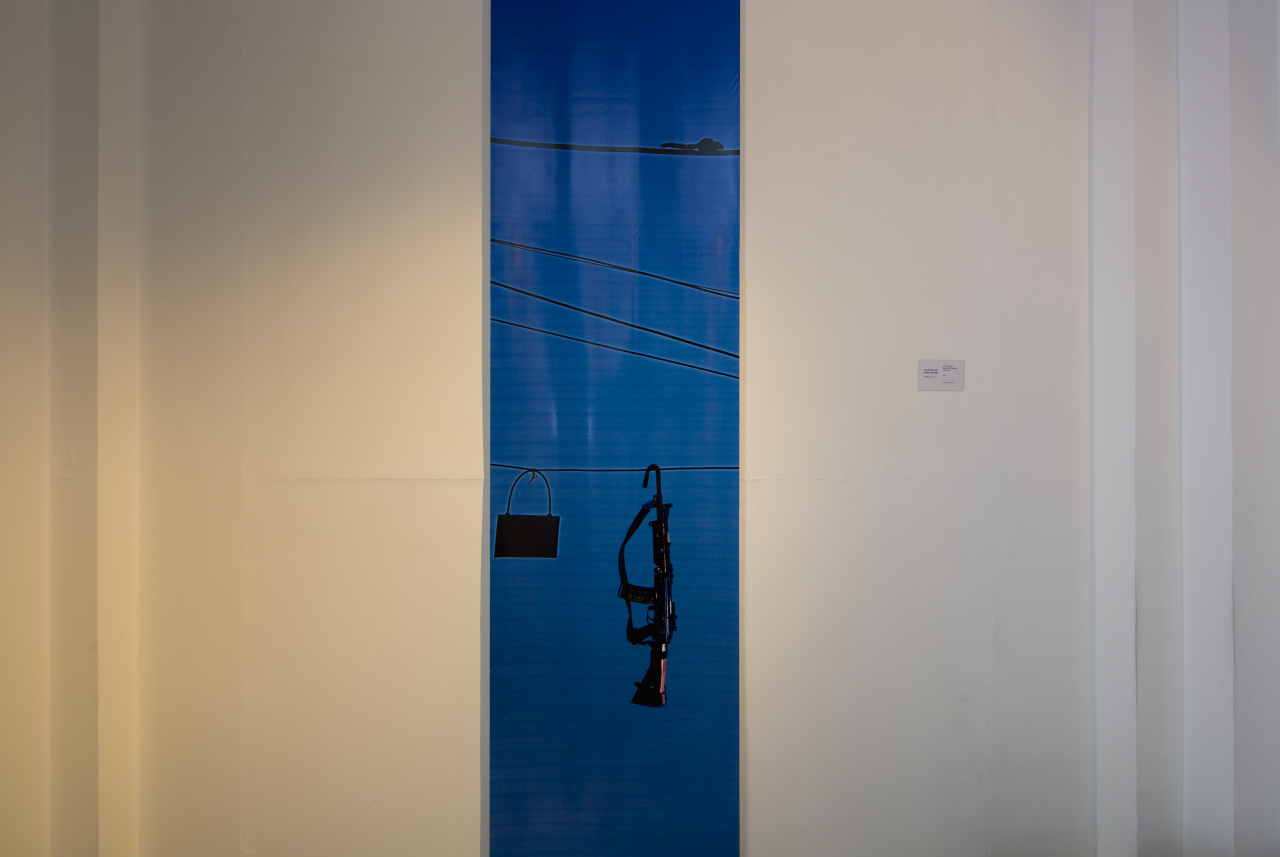
Misadventures of a Phantom Limb
Video, printed text
Prevailing economic theories, no matter how rational they pretend to be, attribute a quasi-mystical power to the force that is imagined as governing the continuing fluctuations of production and exchange. Often this force is named an ‘invisible hand’. Any invisible hand may also be thought of as a phantom limb, a lingering memory of an amputated arm. In Misadventures of A Phantom Limb Raqs gives form to this spectre as a shadowy, liquid trace of an arm. Which, even as it conducts a grand orchestra from one movement to another, from clamour to silence and back again, wonders —like phantom limbs often do—about how to scratch the future it doesn’t have.



Video Diptych
“Strikes at Time” is a lucid dream, readings from an occasional anonymous journal, and a long walk at the edge of the city of the night. In that no man’s land annexed by the awakening mind from the fatigue of the labouring day, the work weaves together a disquisition on time in the form of a discreet annotation on the philosopher Jacques Rancière’s ‘The Nights of Labour’, together with renditions of the found text of a worker’s diary by the CyberMohalla Ensemble, a group of unorthodox proletarian urbanists that Raqs has been in dialogue with over a decade. The shadowy presence of a Yaksha and Yakshi – guardians of wealth in Indic mythologies – stands watching over the work, marking time with questions.
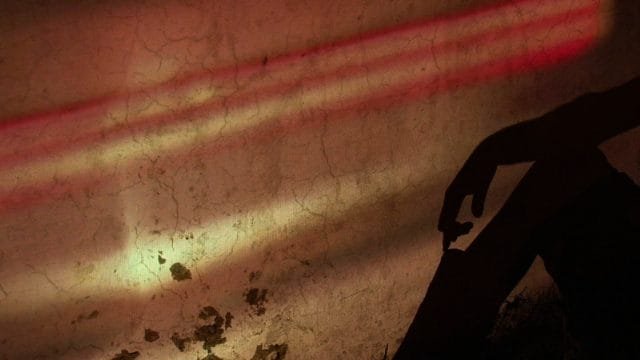
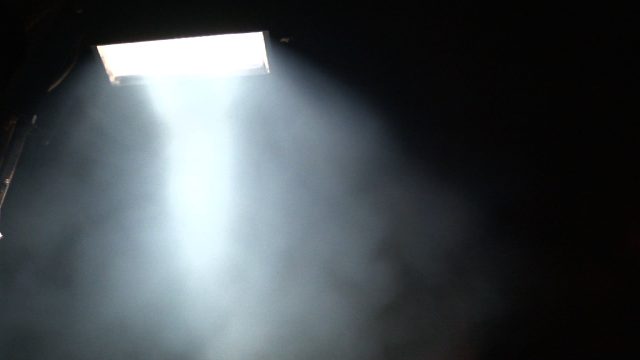
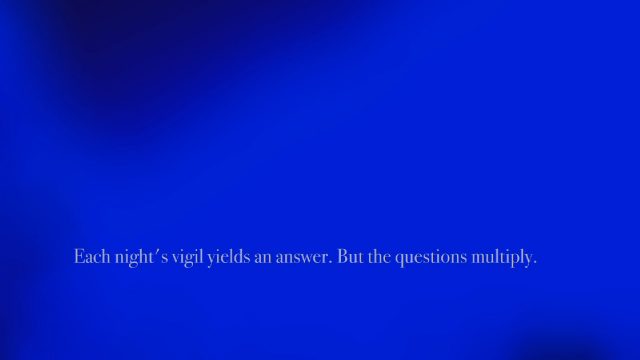
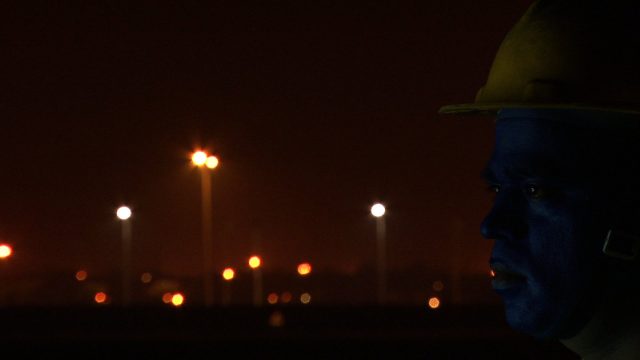
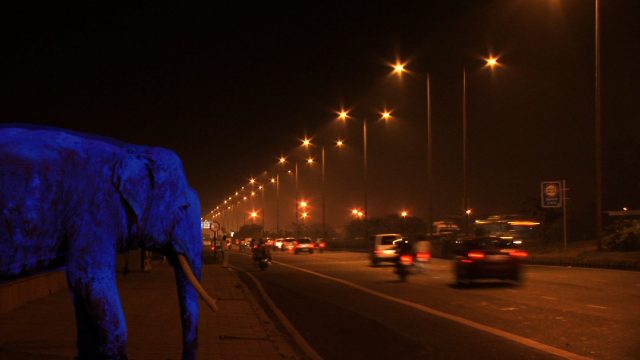
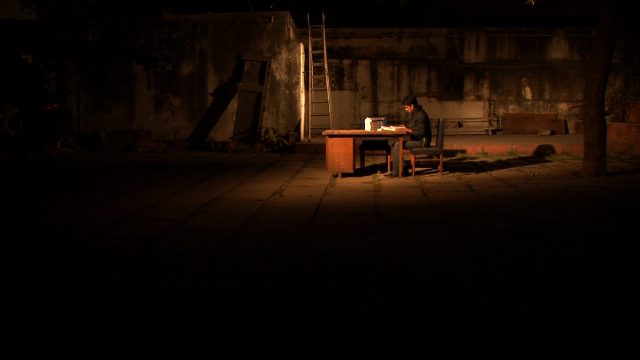
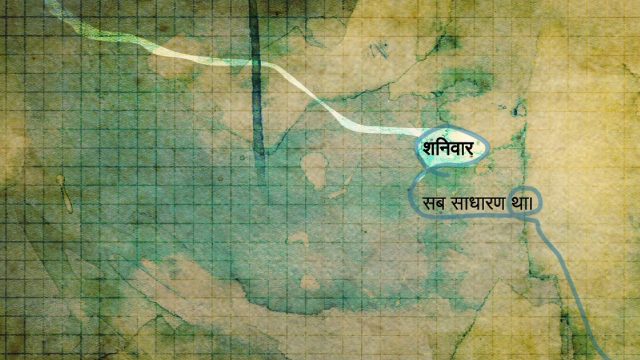
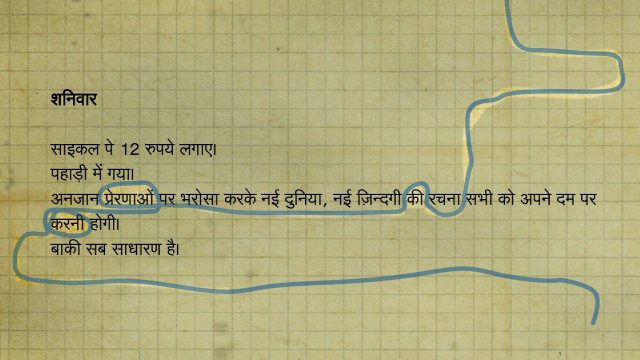
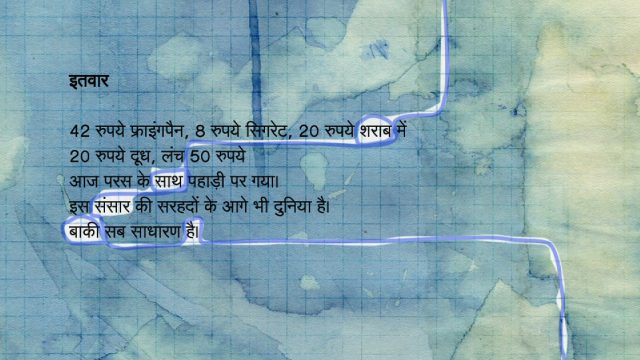
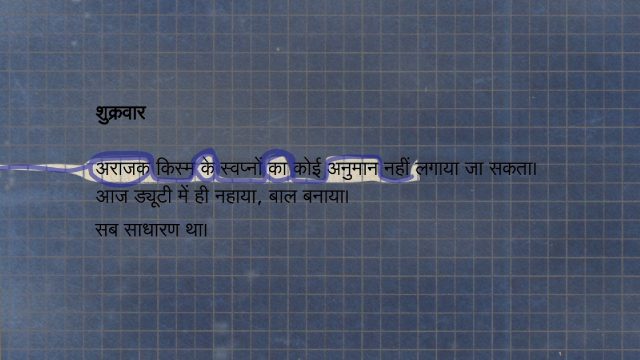
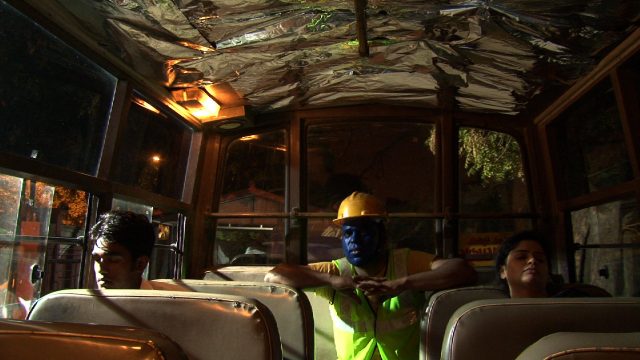
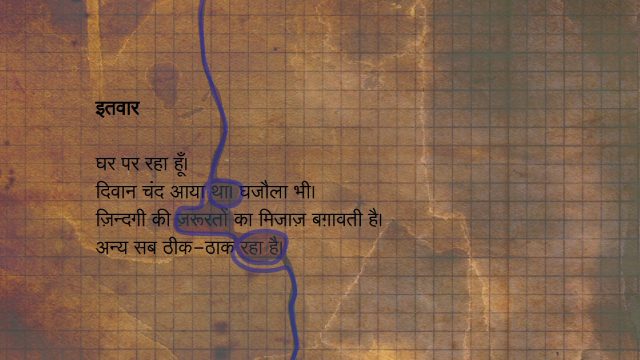
Six photographic prints, 2 x 2 ft each
Reading the censored letters of soldiers from the Indian sub-continent writing home in the First World War becomes a way to make a picture of the world. In this work, a selection of their letters also become a way to picture the photographic image. The English translations of the letters have been extracted from ‘Indian Voices of the Great War’, David Omissi, Palgrave, 1999.
Raqs first encountered these letters in 1993 in the India Office Library, London, and brought them into ‘The Surface of Each Day is a Different Planet’ (2009), an open-ended video work examining how collectivity and anonymity have been represented over time. In ‘Seen at Secunderabagh’ (with Zuleikha Chaudhari, 2011), the letters outlined passage of time and a historical subjectivity that alters the way we encounter photographs.
Video loop Duration: 3:13 minutes
The gatekeepers of the treasury have left the gates of the bank to stand guard over the twilight. A consignment of carbon moves between undisclosed stations under their watch. Sometimes, the shortest distance between the coalmine and the bank is a gap between the lines. Between day and night, light and darkness, the accumulated traces of time hidden in the earth as carbon disappear and reappear under different guises, sometimes as wealth, at other times as poison. Only the gatekeepers know which is which.

Activo y Pasivo (Assets and Debts)
Room Installation Size: 10 x 10 x 7 ft. Wood and glass room, wallpaper, tubelights, carpet
The missing fourth wall of a room saves it from claustrophobia. The walls, and slightly low ceiling, are papered over by prints that create the illusion of the room folding in on itself, as well as multiplying. So that the surface of one room seems to hold the secret of another. The nearly replicant room within the room suggested by wall-paper is just short of being identical to itself. Odd things are askew, or not quite what they seem to be, like pieces in a ‘spot the difference’ puzzle image.
The rooms are as alike, or as apart, as investment and insurance, two mechanisms designed to administer, anticipate and forestall, risk, speculation and the possibility of boom and bust. Does the imprint of one room on another indicate caution or audacity? This is a space of ambivalence, caution only emphasizes the latency of risk. Everything is anticipated, yet anything is possible.
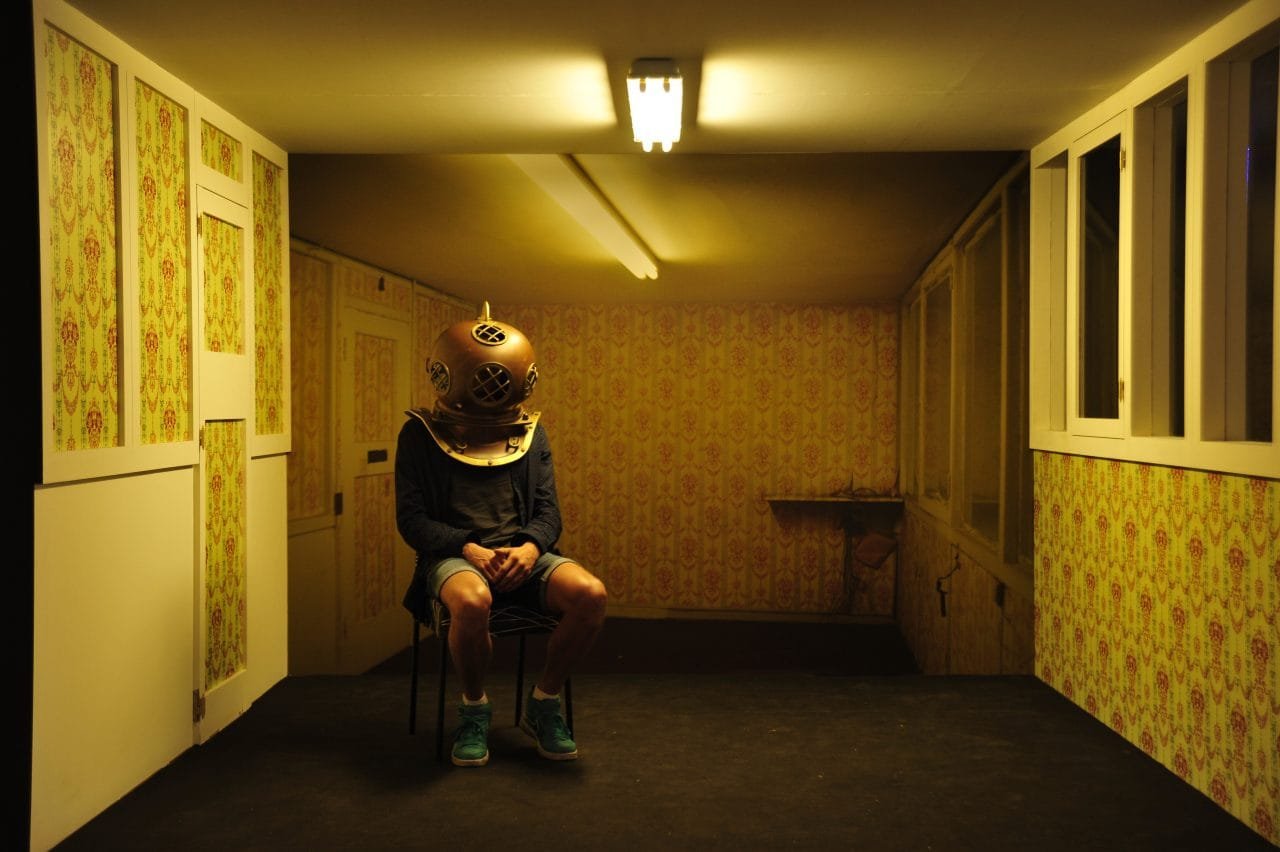
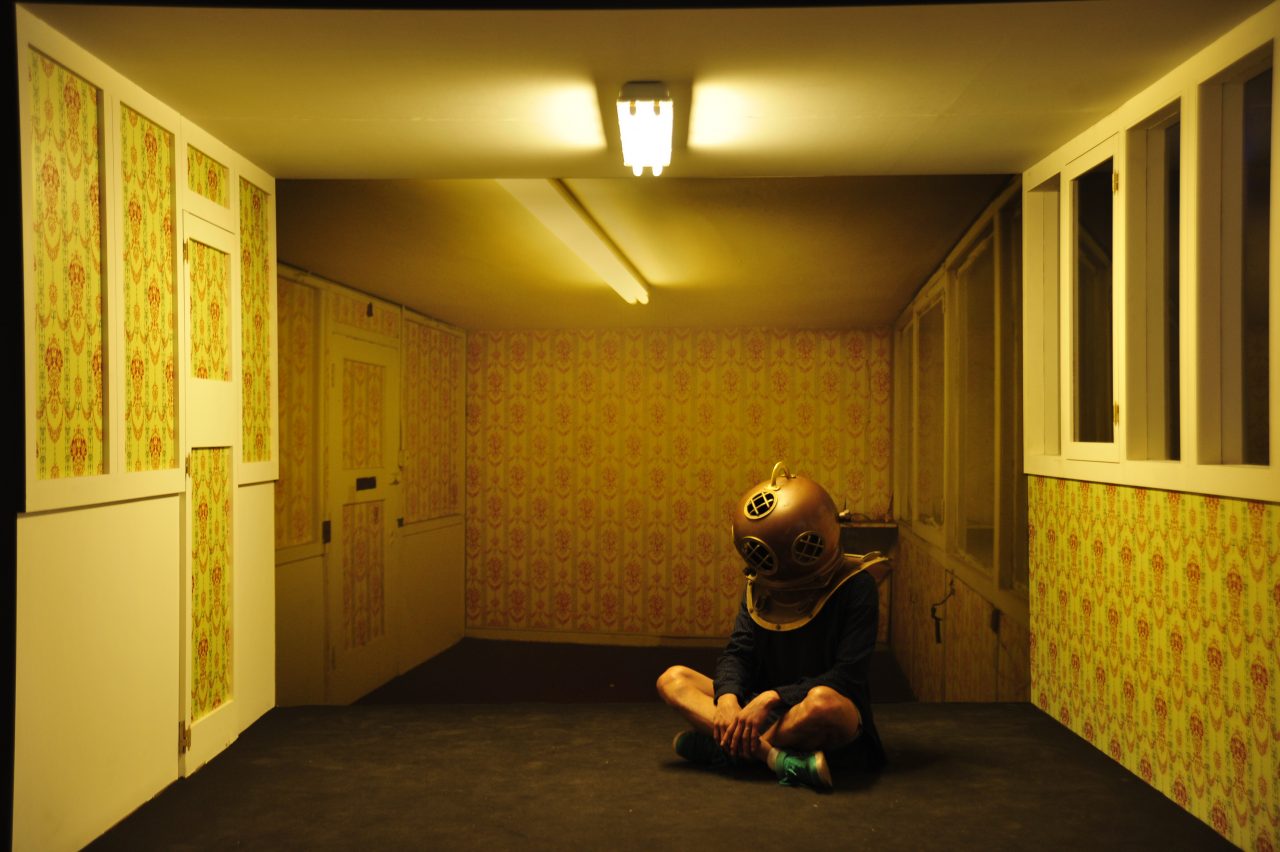
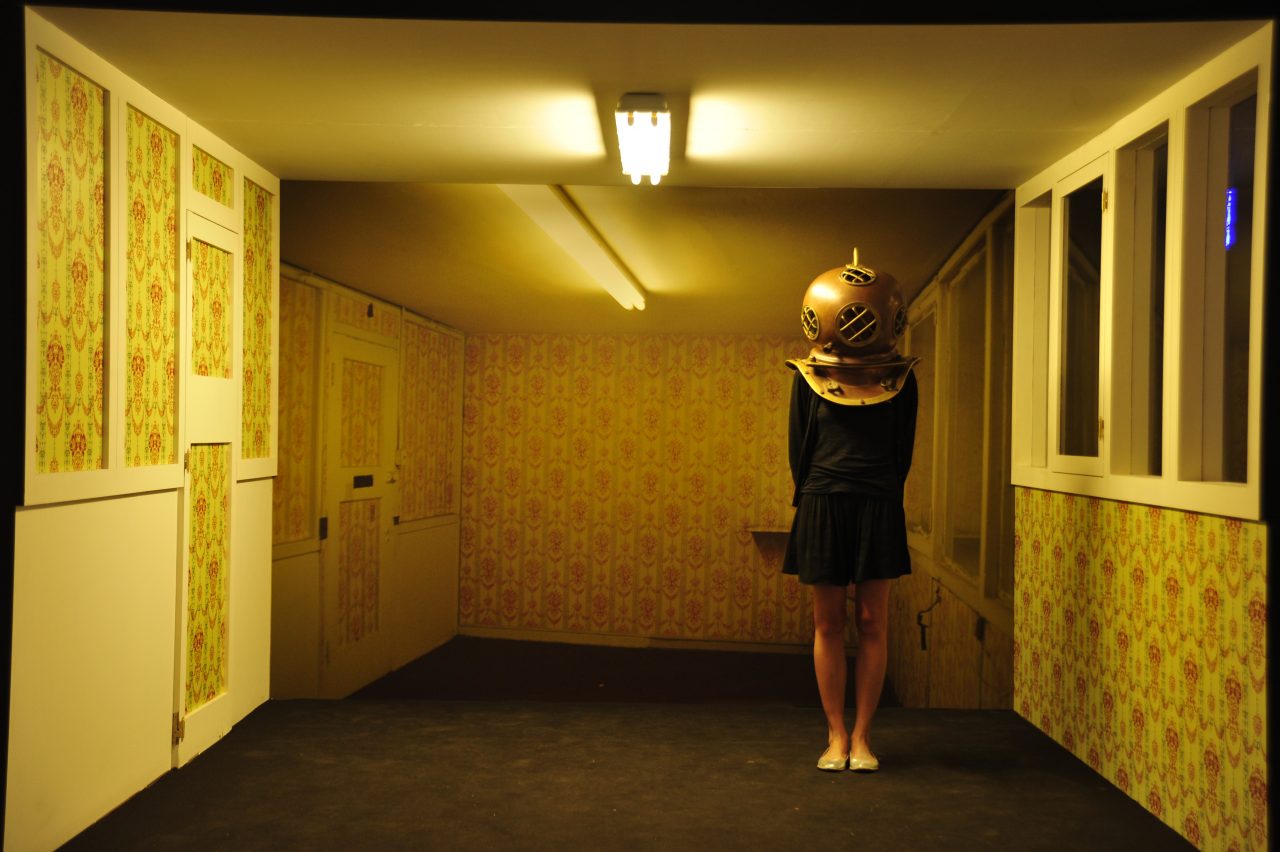
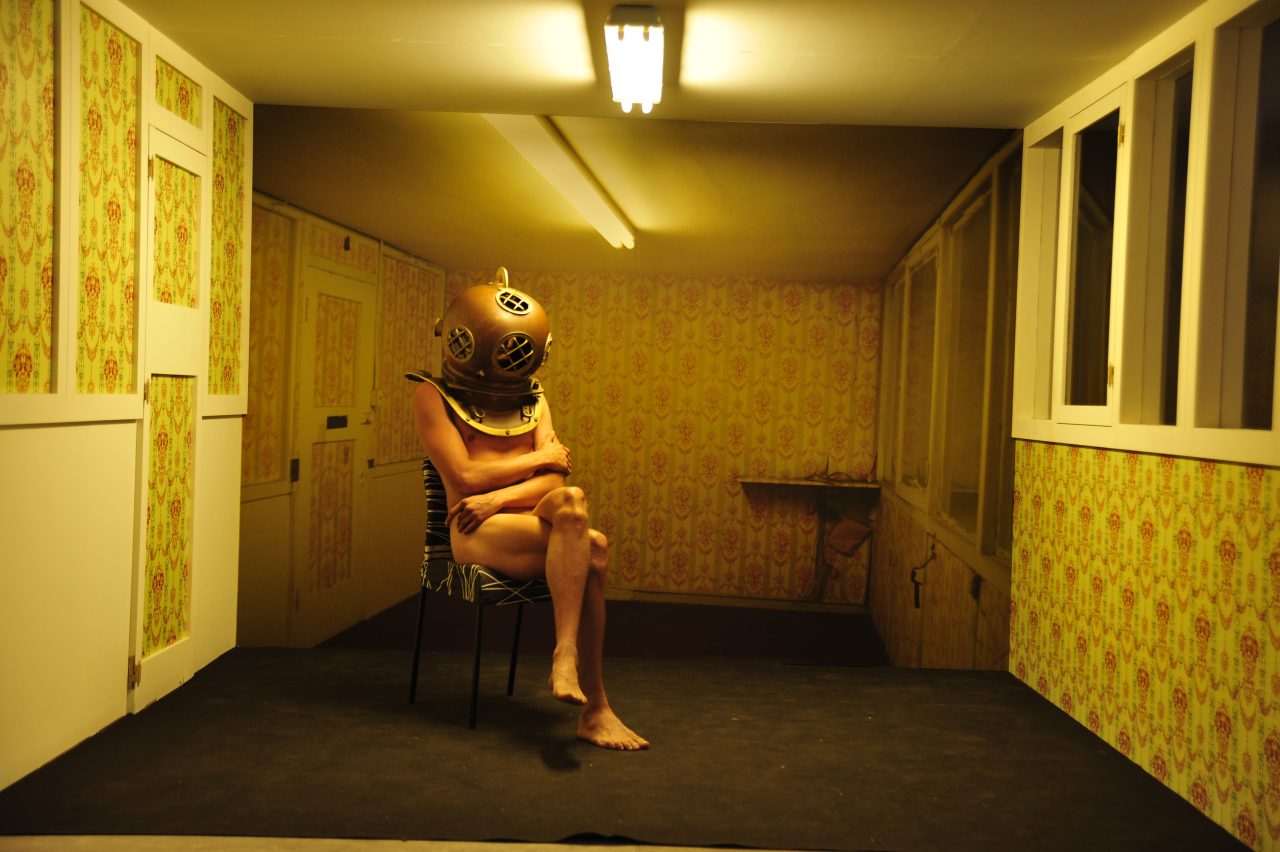
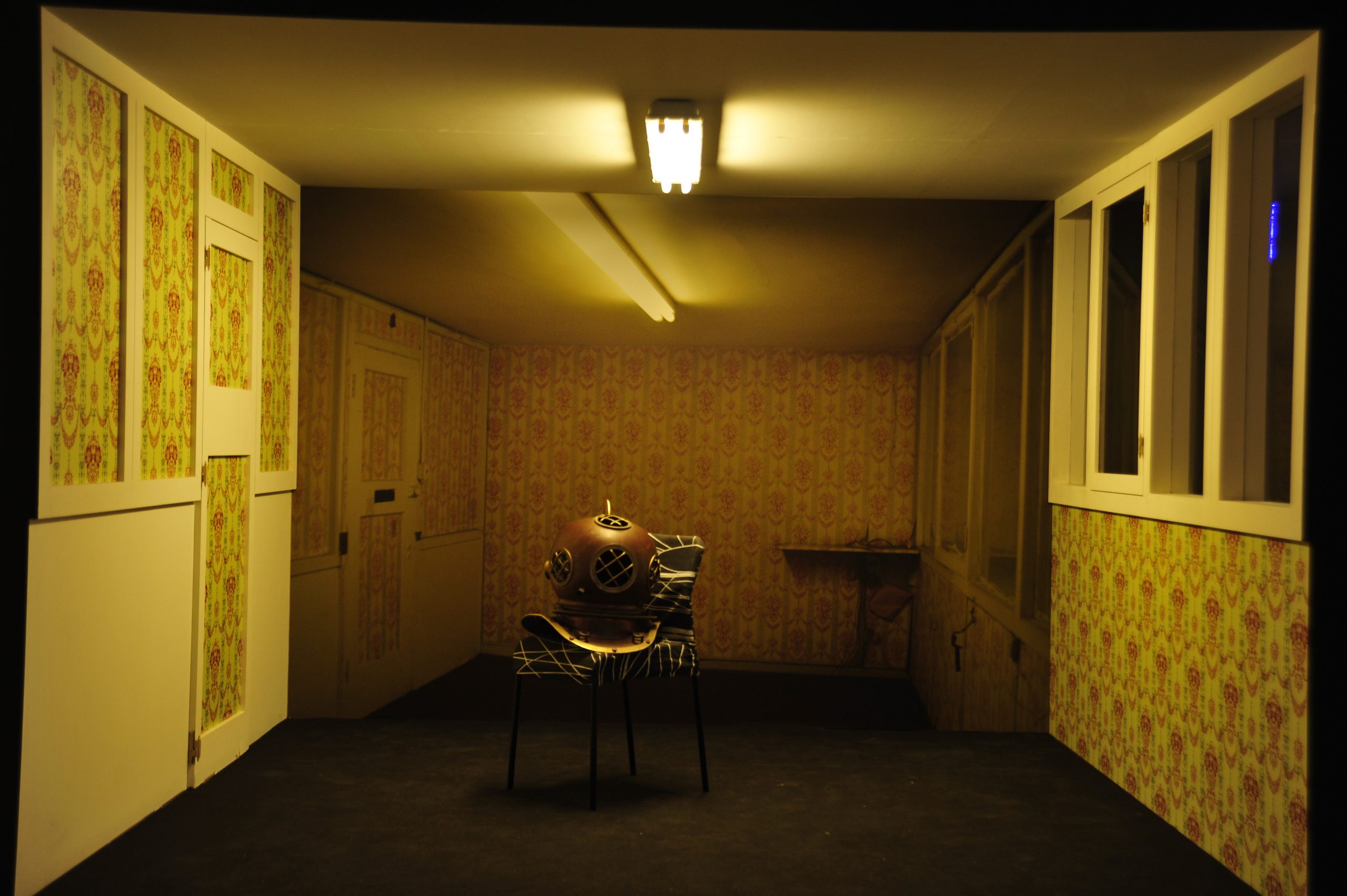
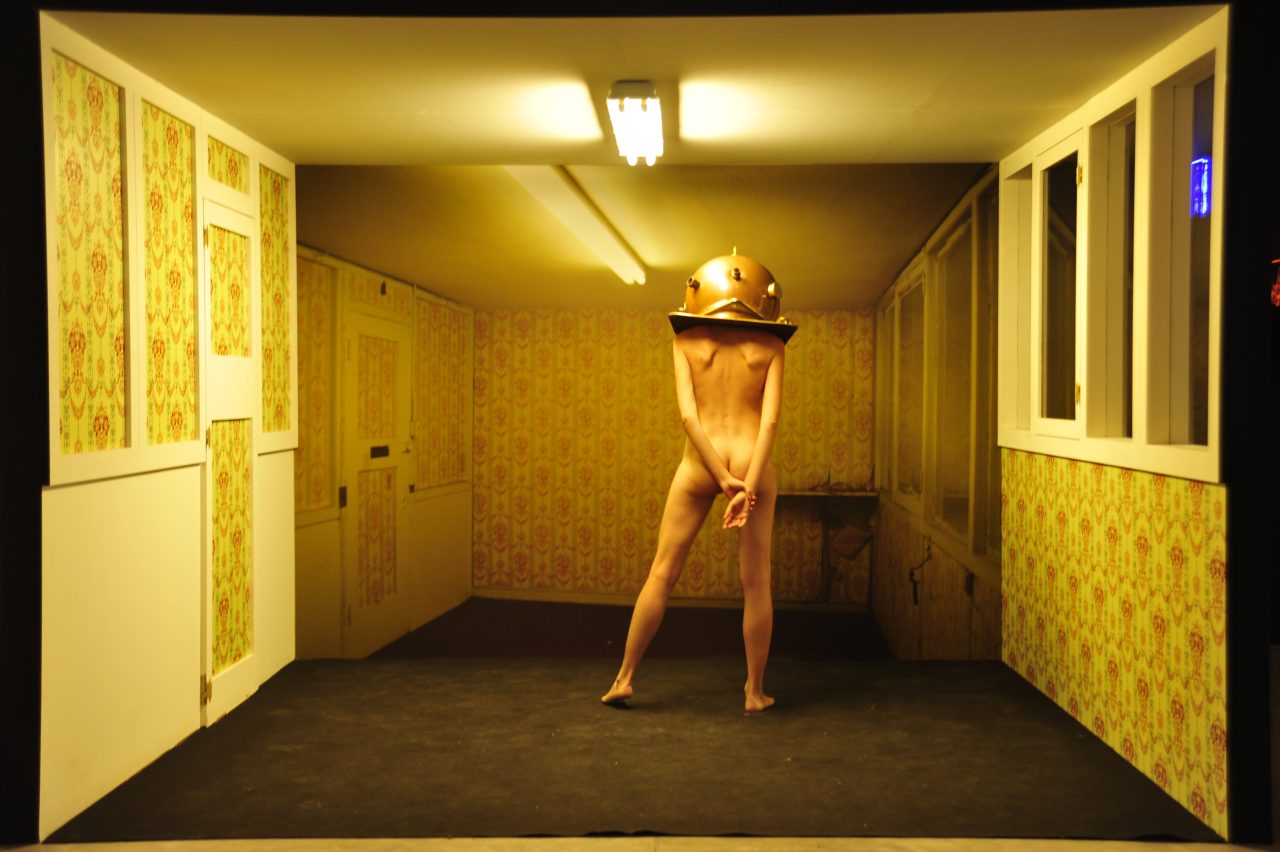
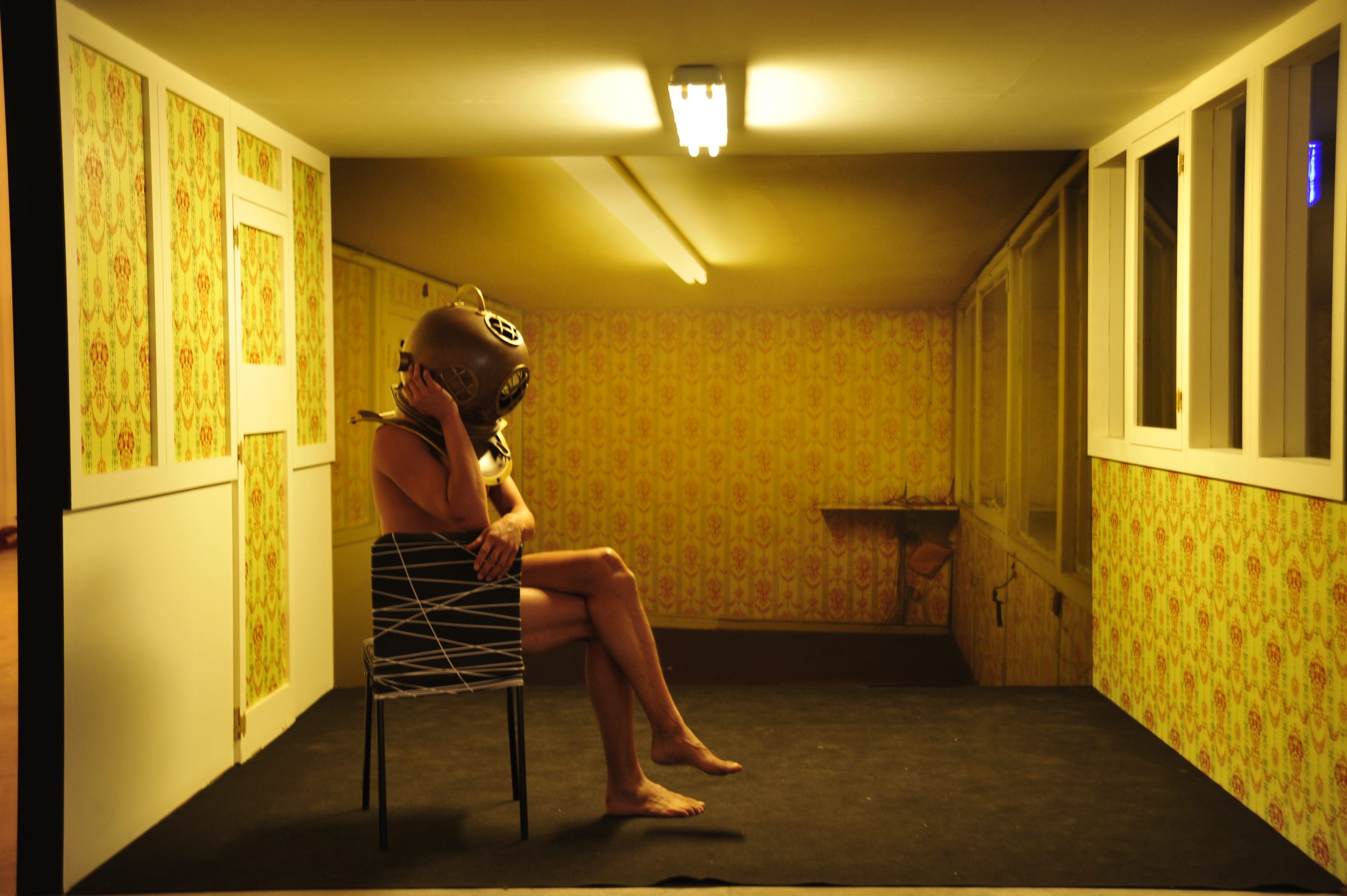
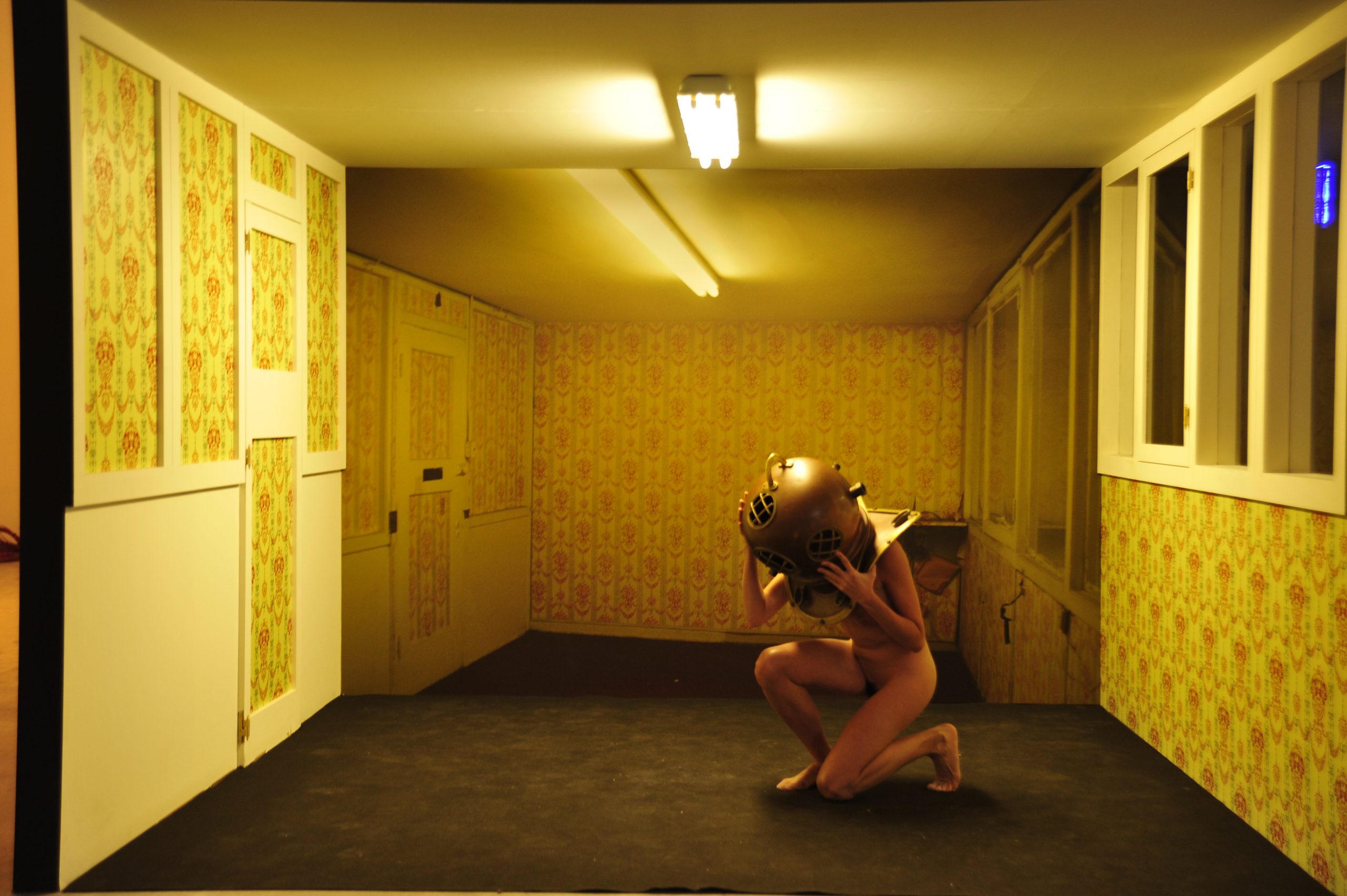
Text, lightbulbs, fixtures, acrylic, wire, synchroniser
Revoltage fills the space it occupies with warmth, light, and the charge of an idea that embraces both celebration and rage. It suggests the energy, or “voltage,” of what it means to revolt, to commit oneself to humanity. The letters join to suggest an incandescent hybrid between electricity and uprising – alternately illuminating the words “Revolt” and “Voltage” through a fluctuating electrical current in order to coin a new thought, “Revoltage”. Revoltage registers first as an after-image (the kind we see when we shut our eyes after looking at a strong source of light), and then as a subliminal suggestion within our consciousness to brighten our days with the brilliance of a form of truant, rebel power that refuses to either name itself or be named into domesticity.
A cascade of black and red wiring (anarchy’s traditional colours) makes its way down from the multitude of light bulbs that make up the word, and flows along its length on the ground. The bunched wires merge and divide like a map of the tributaries of a mighty, turbulent river before disappearing into the shadowy darkness behind the work. By representing the transport of the electrical energy that fuels the work, the wires evoke the way in which ordinary people all over the world have flooded their cities in recent times (in Cairo, New York, Athens, Madrid, Moscow, Tel Aviv, and elsewhere), like rivers in spate, electrifying global consciousness with the actualisation of a new politics, carrying with them the charge of a new mode of being human.
With Revoltage, Raqs have begun writing a new glossary for these times.






